
Mastering the Art of Script Writing for Tour Guiding
- Post author:
- Post published:
- Post category: Content Writing
Table of Contents
As a tour guide, you have the power to bring a destination to life and create lasting memories for your audience. And one of the key tools in your arsenal is a well-written script. In this blog, we will explore the various aspects of script writing for tour guiding and how it can elevate your tours to the next level. We will delve into the role of a tour guide, the importance of a well-crafted script, and the impact it has on the overall tour experience. So, whether you are a seasoned tour guide looking to brush up on your skills or a beginner just starting out, this blog is for you.
Researching and Gathering Information:
As a tour guide, it is your responsibility to provide your guests with an informative and engaging experience. This requires thorough research and gathering of information about the destination you will be showcasing.
Conducting thorough research on a destination is crucial in order to provide accurate and up-to-date information to your guests. It also helps you to create a well-rounded and comprehensive tour that covers all the important aspects of the destination. Start by identifying the key attractions, historical sites, and cultural landmarks of the destination. This will give you a framework to work with and ensure that you do not miss any important information. Utilizing different sources for information is essential in order to get a well-rounded understanding of the destination. While guidebooks and online resources are a good starting point, it is important to also explore other sources such as local newspapers, magazines, and blogs. These sources can provide you with insider knowledge and hidden gems that may not be mentioned in mainstream guidebooks. Interviewing locals and experts is another valuable way to gather insider knowledge about the destination. Locals can provide you with personal anecdotes and insights that cannot be found in any book. Experts, such as historians and cultural experts, can provide you with a deeper understanding of the destination’s history and culture. When conducting interviews, it is important to be respectful and ask open-ended questions to encourage the interviewee to share their knowledge and experiences. It is also important to keep in mind that the information you gather may not always be completely accurate. It is your responsibility to fact-check and verify the information from multiple sources to ensure its credibility. This will also help you to avoid any misinformation or outdated information. In addition to gathering information, it is also important to understand the cultural and social norms of the destination. This will help you to avoid any cultural faux pas and ensure that your tour is respectful and inclusive of all guests. Incorporating local language and phrases into your script can also add a personal touch and make the tour more immersive for your guests. This can be achieved through your interactions with locals and through your research on the destination’s language and dialects.
Crafting a Compelling Narrative:
As a tour guide, your main goal is to provide an unforgettable experience for your guests. One of the key elements in achieving this is by crafting a compelling narrative through your script. A well-written script can make all the difference in engaging and captivating your audience, and incorporating historical and cultural context can add depth and authenticity to your tour.
Elements of a Good Story:
Every great tour has a great story at its core. A good story has the power to transport your audience to another time and place, and create an emotional connection with the destination. To craft a compelling narrative, your story should have a clear beginning, middle, and end. It should also have a central theme or message that ties everything together.
Techniques for Engaging and Captivating an Audience:
One of the most important techniques for engaging and captivating an audience is by using descriptive language. Paint a vivid picture with your words, and use sensory details to bring the destination to life. Another effective technique is by incorporating humor and personal anecdotes into your script. This will not only keep your audience entertained, but also make them feel more connected to you as a guide.
Incorporating Historical and Cultural Context into the Script:
Incorporating historical and cultural context into your script is crucial for providing a well-rounded and informative tour experience. This can be done by researching the destination thoroughly and including interesting facts and stories about its history and culture. It’s also important to consider the perspectives of different cultures and present them in a respectful and accurate manner.
Utilizing Visual Aids:
Visual aids can greatly enhance the tour experience and help your audience better understand the destination. Choose visuals that are relevant to your story and use them strategically throughout your tour. This can include photos, maps, videos, and other interactive elements. Just be sure not to rely too heavily on visual aids and remember to still engage with your audience through your words.
Practicing and Refining the Script:
As the saying goes, practice makes perfect. It’s important to rehearse and refine your script before each tour. This will not only help you remember your lines, but also give you the opportunity to make any necessary revisions. Seeking feedback from colleagues or even your audience can also help improve your script and delivery.
Dealing with Challenges:
No matter how well-prepared you are, unexpected challenges may arise during a tour. This could be anything from bad weather to a disruptive guest. As a tour guide, it’s important to stay calm and adapt your script accordingly. This could mean changing the route or adjusting the content to suit the audience. Remember to always remain professional and keep the tour engaging and interactive.
Role of visuals in enhancing the tour experience:
Visual aids can help bring your stories to life and make them more engaging and memorable for your audience. They provide a visual representation of the information you are sharing, making it easier for your guests to understand and retain the information. This is especially important for tours that involve historical or cultural information, as visuals can provide a better context and help guests visualize the past. In addition, visuals can also help break the monotony of a long tour and keep your guests interested and engaged. This is especially useful for tours that involve a lot of walking or traveling, as it gives guests something to look at and focus on while they are on the move.
Choosing the right visuals for different types of tours:
The type of visuals you use will depend on the type of tour you are conducting. For example, if you are leading a nature or wildlife tour, using photographs or videos of the flora and fauna in the area would be more appropriate. On the other hand, for a historical tour, you can use maps, illustrations, or photographs of the historical sites you are discussing. It is important to choose visuals that are relevant to the information you are sharing and are of good quality. Low-quality visuals can be distracting and take away from the overall experience. If you are using photographs, make sure they are clear and well-lit. If you are using videos, ensure they are of high resolution and have good audio quality.
Script Examples for Tour Guiding
Ladies and Gentlemen,
We welcome you to the very heart of this gorgeous city! Hello! My name’s John Your friendly guide throughout the entire day. I’m here to help make your trip as interesting, informative and unforgettable as is possible.
When we embark on our journey Let’s take some time to take in the vast weaving of history, culture and the beauty that makes the place we’re visiting so special.
The first stop on our tour is the stunning”[Insert Name of Landmark],” the place where both history and design blend together seamlessly. It was built in the year [year], this iconic building is a testimony to the rich history of [City’s Name]. When you walk through its halls of grandeur be sure to look at the exquisite details in the walls. Each telling a tale that is unique to it.
After that, we’ll travel toward the lively [Insert Name] Then, we’ll head to the vibrant [Insert Market Name]. It is known for its lively energy, the market has an assortment of products from local vendors including hand-crafted items and mouth-watering street food delight for the entire senses!
The journey takes our group to the peaceful natural site of [Insert Park (or Natural Site NameThis is known as the [Insert Name of Natural Site or Park]. Within the hustle and bustle of city life the park is the tranquility of a retreat. Make sure you take photographs of the amazing panoramas that it provides.
Through our journey I would like to encourage everyone to inquire about your questions, engage with people from the area, and fully immerse yourself in the amazing experience that the city of [City’s Name] can offer. Keep in mind that travel isn’t only about exploring new destinations but also experiencing different flavors, cultures and views.
When we go on our journeys with each other, we must respect the customs and values of our city and leave just footprints, and only take photographs.
We thank you for allowing us to serve to be your guide into the city’s heart. [City’s Name]. Relax, sit back and let’s build memorable memories throughout this incredible trip!
All the best to everyone,
Enjoy this thrilling adventure through breathtaking scenery as well as the captivating tales of our city that we adore. I’m John Your reliable tour guide and your travel companion for this journey.
While we set off on this adventure, let’s take in the beauty and vitality that’s essential to our location.
The first place we visit is the breathtaking [Insert Landmark’s Name], which is a gem that crowns this town. It was built in the year [yearit was completed in the year [Year], its beauty and architectural splendor is a testament to the city’s rich history. When we stroll through its streets, let every stone tell tales from the past.
We’ll then make through the bustling “Insert Name of Market The next step is to visit the bustling [Insert Market Name here]. The market in the city is its center of activity, with a pulsating rhythm and vibrant colors. There’s an abundance of treasures from the local area, tasty food, and cheerful people. Do not be afraid to bargain at times, it’s an element of fun!
Then we’ll retreat in the calm embrace of the [Insert Park or Nature Site Name the name of a park or natural site. The city’s tall buildings are a distant memory the natural oasis offers an oasis of tranquility. Make sure you take some time to take in the stunning views that it provides.
Through our travels I would like to encourage that you share your thoughts as well as ask questions and completely immerse yourself in the journey. It’s as much about people and the culture and traditions as destinations.
Happy day fellow adventurers,
We’re excited to share our journey across the breathtaking views and rich past of this fascinating city. This is my guide today We’ll discover the many stories that make the city so special.
The journey starts at the iconic [insert landmark’s name]. The Landmark’s Name. The architectural wonder, constructed in the year [year], is an emblem of the city’s strength and creativity. When we wander its magnificent halls, each part tells an era that has passed.
We’ll then dive right deep into the center of the city, which is the bustling [Insert Name of Market. It’s a sensory blast of sights, sounds and smells. From hand-crafted crafts to tempting local food, it gives you an insight into the life of our town. Meet the sellers their stories are equally as vibrant as the products they sell!
There, we’ll be able to be able to relax in the peaceful surrounding of the [Insert Park Name or Natural Site Name]. The tranquility of this oasis in bustle of the city is the perfect setting for reflection. Make sure to record beautiful views through your camera and within your minds.
While we travel throughout the city, you are at ease to ask questions, talk about your experiences as you immerse yourself into the culture of the city. Keep in mind that travel involves a collection of experiences not only photographs.
Respecting the city’s heritage as well as the natural environment is essential to the journey we are on. Make sure we don’t leave a footprint behind and preserve its beauty for the next visitors.
We thank you for choosing our company to help you navigate the city’s heart. [City’s Name]. Relax and keep your eyes open and let’s create this adventure a treasure-trove of memories that will last forever!
Hello, esteemed explorers,
Welcome to all in our first foray to the intriguing places and intriguing the history of this fascinating city. Your guide for the day I am able to promise you a rewarding adventure filled with exciting explorations.
The first place we’ll visit today is the legendary [Insert Market Name]. The architectural marvel, built in the year [Year], serves as a resounding representation of our city’s imaginative energy and historic depth. While we wander through its magnificent areas, every corner holds an interesting story to tell and a part of the past to tell.
We’ll then dive into the bustling chaotic city’s center The [Market Name]. The market’s bustling activity is an explosion of colors scents, sounds, and colors. There are a variety of traditional crafts, exotic food and friendly smiles. Get to know the locals. their stories add layers to the story of the city.
After that, we’ll move on towards the serene ambiance of the [Insert Park or [Nature Site Name] Then, we’ll move to the tranquility of [Insert Park or Natural. With the bustle of city life it’s a tranquil oasis that is a welcome respite. Be sure to take in the magnificent views that unfold.
Throughout the trip don’t be afraid to inquire, offer experiences, or immerse yourself within the local culture. It’s all about learning. involves absorbing new perspectives and new perspectives.
While we discover the charm of our city we must remember to cherish the city’s traditions and preserve the natural beauty of its surroundings. Leave only footprints and cherish the precious memories.
Thank you for trusting us to guide you through [Name of the City]. Get ready to be overwhelmed and let’s create a collection of unforgettable memories together!
Welcome to all on our journey through the captivating places and intriguing the history of this fascinating city. As your tour guide today I am able to promise you a rewarding trip filled with wonderful experiences.
The first place we’ll visit today is the famous [Insert Landmark’s Name]. This magnificent structure, which was built in the year of [Year], is regarded as a enduring representation of our city’s artistic spirit as well as its historical profundity. When we walk through its vast spaces, each one has an interesting story to tell, a bit of history that we can share.
We’ll then dive into the bustling urban chaos market, which is the market. [Market Name]. The market’s bustling activity is an awe-inspiring display of scents, colors, and sound. The market is filled with regional crafts, exotic cuisines and friendly smiles. Meet the people who live there, their stories add layers to the story of the city.
After that, we’ll move on into the tranquility of the [Insert Park or Natural Site Name] Then, we’ll move to the tranquility of [Insert Park or Natural. In the midst of the bustling city it’s a tranquil oasis that provides a tranquil respite. Make sure you take time to enjoy the stunning views it offers.
While on our journey don’t be afraid for a chat, impart experiences, or immerse yourself within the local culture. It’s all about learning. is about experiencing new things and new perspectives.
When we explore the charm of our city Let’s not forget to respect the city’s traditions and preserve its beauty and natural splendor. We should leave just footprints and cherish the precious memories.
We thank you for trusting us to guide you through the city of [Name] we are honored to be a part of [City’s Name]. Be ready to be overwhelmed and let’s create a collection of memorable moments!
Intrepid travelers, greetings!
Begin our adventure through breathtaking landscapes and the fascinating tradition of this amazing city. As your tour guide I’m thrilled to join you on this journey filled with fascinating insights.
The journey begins with the magnificent insert landmark’s name of the Landmark. It was built in the year of year this awe-inspiring building is an example of the city’s creative talent and the strength of its past. When we travel its long avenues, every intricate element is a relic of past times.
Then we head to the bustling heart of the city. It’s the lively [Insert Name of Market]. The bustling marketplace offers a variety of hues scents, sounds, and colors. From handmade souvenirs to delectable local food, it offers an authentic glimpse of the city’s life. Do not be afraid to interact with locals, their stories add an interesting color to the story of the city.
We then retreat in the calming surroundings in [Insert Park or Nature Site Name]. In the midst of a city’s constant tempo it is a tranquil spot that provides a respite. Take time to take in the breathtaking views which open up in front of your eye.
While we travel, you are welcome to ask questions, discuss your experiences as you immerse yourself within the culture and ethos of the city. Travel is, after all, an opportunity to gather experiences, not merely snaps.
While we weave the fascinating tapestry of our city we must pledge to respect its traditions and preserve its stunning beauty. We must ensure that our footprints remain only temporary, yet our memories last forever.
We thank you for trusting us with your exploration of the city’s name. Get ready for a thrilling trip and let’s create the most unforgettable memories!
Hello, adventurous souls,
Enjoy our thrilling journey through the fascinating corners of this amazing city. Your tour guide is me I’m thrilled to guide you on an adventure that is filled with amazing sites and treasures from the past.
The first stop is the stunning [Insert Landmark’s Name]. It was built in [year] the building represents our city’s culture as well as its long and rich heritage. When we stroll through its sprawling halls, every corner and cranny tells an intriguing tale from the past.
We’ll then explore the vibrant heart of the city: the bustling marketplace named [Insert Market Name]. This lively market provides a visual explosion of smells, colors and sound. There is a variety of traditional products, delicious cuisines and smiling faces. You are welcome to interact with the vendors in town and their stories add a personal element to the story of the city.
We’ll then move into the serene setting of [insert Park or Nature Site Name], Then, we’ll move to the tranquil setting of [Insert Park or Natural. Within the hustle and bustle of city life it offers an opportunity to enjoy a quiet moment. Do not forget to enjoy the breathtaking views it provides.
While we travel I would like to encourage people to inquire to share your thoughts, offer insights as well as fully enjoy the unique atmosphere of your city. It’s true that traveling involves soaking oneself in different perspectives and experiences.
While we explore the charm of the city we must remember to honor its customs and safeguard the beauty of nature. We must ensure that we leave just footprints and bring back an incredible collection of treasures.
We thank you for choosing to join us in exploring the city of [City’s Name]. Make sure you buckle up to embark on an exciting journey in creating an album of memorable moments with you!
Tips for creating visually appealing and informative presentations:
Keep it simple: Avoid cluttering your presentation with too much information or too many visuals. This can overwhelm your audience and make it difficult for them to focus on the key points. Use a variety of visuals: Mix it up by using a combination of photographs, videos, maps, and illustrations. This will keep your audience engaged and prevent them from getting bored. Use captions and labels: Make sure to label your visuals with relevant information, such as the location or date of a photograph. This will provide context and make it easier for your guests to understand. Use storytelling techniques: Just like your script, your visuals should also tell a story. Use techniques such as before and after photos or a series of images to create a narrative. Incorporate humor: Visuals can also be used to inject some humor into your presentation. This can help lighten the mood and make the tour more enjoyable for your guests.
Use technology: There are many tools and software available that can help you create visually appealing presentations. Practice and rehearse: Just like your script, it is important to practice and rehearse your presentation to ensure a smooth and seamless delivery.
As a tour guide, your script is your most valuable tool. It sets the tone for the entire tour and acts as a guide for both you and your audience. A well-written and practiced script can make the difference between a mediocre tour and an unforgettable experience for your guests.
Importance of Rehearsing and Practicing the Script:
Rehearsing and practicing your script is crucial for delivering a smooth and engaging tour. It allows you to become familiar with the content, flow, and timing of your script. By rehearsing, you can also identify any areas that may need improvement or clarification. Practicing your script also helps you to become more confident in your delivery. Nerves and stage fright can be common for tour guides, especially when leading a large group. However, by rehearsing and practicing your script, you become more comfortable with the material, making it easier to deliver it with confidence and enthusiasm.
Seeking Feedback and Making Necessary Revisions:
While practicing your script, it is important to seek feedback from others. This can be from colleagues, friends, or even your guests. Their perspectives can provide valuable insights and help you identify any areas that may need improvement. As you receive feedback, be open to making necessary revisions to your script. Remember, your goal is to provide the best possible experience for your guests, and their feedback can help you achieve that. It is also important to keep in mind that your script should be a living document, constantly evolving and improving with each tour.
Incorporating Improvisation Techniques for a More Natural Delivery:
No matter how well-rehearsed and practiced your script is, there may be moments during a tour that require some improvisation. This could be due to unexpected situations, questions from guests, or simply wanting to add a personal touch to your delivery. Incorporating improvisation techniques into your script can make your tour feel more natural and authentic. It allows you to connect with your audience on a more personal level and make the tour experience more engaging and interactive. Some improvisation techniques you can use include storytelling, humor, and asking open-ended questions to encourage participation from your guests. Remember to always stay true to the main points of your script, but don’t be afraid to add your own personal flair to keep things interesting.
As a tour guide, you are responsible for creating a memorable and informative experience for your guests. However, despite thorough planning and preparation, unexpected situations can arise during a tour that can throw off your script and disrupt the flow of your tour. These challenges can range from weather changes to technical difficulties, and even difficult guests. As a professional tour guide, it is crucial to have strategies in place for handling these challenges and adapting your script to different audiences to ensure an engaging and interactive tour. Handling unexpected situations during a tour requires quick thinking and flexibility. The first step is to remain calm and composed, as your guests will look to you for guidance. For example, if the weather suddenly changes, you may need to adjust the route or find an indoor alternative. If there are technical difficulties, have a backup plan in place, such as using a different device or switching to a different activity. It is also essential to communicate openly and honestly with your guests, keeping them informed of any changes and reassuring them that their experience will not be compromised. Another challenge that tour guides face is adapting their script to different audiences. Each group of guests is unique, with varying interests, knowledge levels, and cultural backgrounds. It is crucial to research and understand your audience beforehand to tailor your script accordingly. For example, if you have a group of history buffs, you may want to go into more detail about the historical significance of a location. On the other hand, if you have families with young children, you may want to incorporate fun facts and interactive activities to keep them engaged. To adapt your script effectively, it is essential to have a broad knowledge of the destination and its history, culture, and customs. This will allow you to make on-the-spot changes and additions to your script to cater to your audience’s interests. Additionally, be open to feedback from your guests. They may have specific questions or interests that you can incorporate into your script to make it more relevant and engaging for them. Keeping the tour engaging and interactive is crucial for a successful experience. A well-written script is a great starting point, but it is essential to keep your guests actively involved throughout the tour. One way to do this is by incorporating interactive elements such as quizzes, games, or hands-on activities. This will not only keep your guests engaged but also make the information more memorable for them. Another tip for keeping the tour interactive is to engage your guests in conversations and encourage them to ask questions. This will make the tour more personal and allow for a deeper understanding of the destination. Additionally, make use of visual aids such as maps, photos, and videos to enhance the tour experience and keep your guests visually engaged.
Conclusion:
In conclusion, mastering the art of script writing for tour guiding is a crucial skill for any tour guide looking to provide an exceptional experience for their guests. Throughout this blog, we have explored the various aspects of script writing and how it can greatly enhance the overall tour experience. We began by understanding the role of a tour guide and the importance they hold in the tourism industry. We then delved into the responsibilities and qualities of a successful tour guide, highlighting the impact of a well-written script on the overall tour experience.
Make Accurate Predictions with Script for Weather Forecast
Unlocking the Power of Script for Emcee
You Might Also Like

How to Write a Compelling Teacher Bio with Samples

Maximize Your Impact as a Dental Assistant with an Effective Bio

How to Create a Powerful Loan Officer Bio with Examples

How to Write a Tour Guide Script that Wows Guests
By Erick Tomaliwan
Share this article:
- Facebook icon
- LinkedIn icon
- Twitter icon

What do charisma, charm and storytelling skills have to do with being a good tour guide? As it turns out — a lot.
As you figure what to include and how to write a tour guide script, know that you are pivotal to the guest experience.
Picture this: a traveler arrives at a destination full of curiosity and excitement, excited to immerse themselves in a new culture. And while tour guests might be ready to explore, they don’t know where to start and are leaning on you to show them the way.
With activities, sights and scenery to explore, there’s so much to discover. Plus, it’s exciting to be in a brand new place for the first time — an experience, made better with a tour guide.
What is a tour guide script?
Before your tour begins, you’ll want to share a little preamble with travelers. Creating a tour guide commentary gives guests a sense of what to expect from a tour. In this case, you might start with:
- Introducing who you are
- Confirming the tour type and where you’ll be heading
- Noting washroom locations
- Mentioning the number of stops along the route
An intro will give guests an idea of when to pay attention. Varying your pace and taking a pause can make your guest’s ears perk up. And, the best part? They aren’t expecting you to be speaking constantly.
In fact, guests may even appreciate a bit of silence so they’re able to process their own thoughts while on tour.
Tour guide script opening remarks
Start with something funny that acts as an icebreaker. Your witty banter could relate to the area, the weather or how this happens to be your first time leading this tour (and where you silently plead with them to go easy on you).
Cue the awkward chuckles and mild concern, after which you showcase your enthusiasm and competence. From here your goal should be to figure out how you can immerse your guest in the story.
In your tour guide safety script, this is one of the first segments where guests’ eyes will glaze over. Don’t let this happen! Make safety entertaining with some witty banter and overly exuberant demonstrations or stories of what happens when guests fail to pay attention.
You’re likely to have a range of personality types amongst your tour guests. So, aim to get everyone on the same page with some humour.

How to provide tour commentary (step-by-step)
Any tour should start with opening remarks about what guests can look forward to. Earn guest’s attention by structuring your tour commentary in a way that puts their interests first.
Keen to deliver a captivating tour? Start by following these guidelines:
1. Address important topics
Guests want to head into a tour feeling confident that a guide will deliver a memorable experience. With your approach, aim to be both informative and engaging with your guests from the get-go.
2. Bookend points of interest
Lead with the most commonly asked questions and topics that are featured in your tour listing. Consider mentioning whether food will be available and where guests can find washroom locations along the tour route.
You’ll also want to address anything that isn’t concrete, like whether they’ll have time to explore and photograph a famous landmark. Just like with GPS in your car, it’s much easier to know where to turn if you know the route plan.
3. Address any questions
After your pre-amble confirms the tour type, make space to connect conversationally with your guests. You can ask guests where they are from, the reason for this vacation and try to find out what people are most looking forward to seeing.
Ask if anyone has questions about the tour, another tour booking or a pickup at a specific time. And while it may not impact your tour, guests like to be considered.
As a bonus, this minimizes potential disruptions halfway and provides good tour commentary. In addition, if there happens to be transportation for the bulk of the group, ensure you instill the importance of time management.
4. Showcase your enthusiasm
Charm and inspire guests before the tour kicks off, with your excitement for what’s to come. And while this may not be your first time providing this tour, trust that they will feed off your energy and excitement.
Picture yourself taking a moment to take in sweeping views or savour a tasty treat while on a food tour. These moments of acknowledgement let your guests know that they can carve out a few moments too.
5. Leave guests feeling inspired
You may already be a charismatic tour guide. Perhaps you’re delighting travelers with your wild and wondrous stories. But there’s always room for adding in a bit of variety into your daily routine and a fresh perspective for how you deliver guided tours. When guests wrap up a tour, your goal is for them to feel like they learned a little and had a lot of fun.
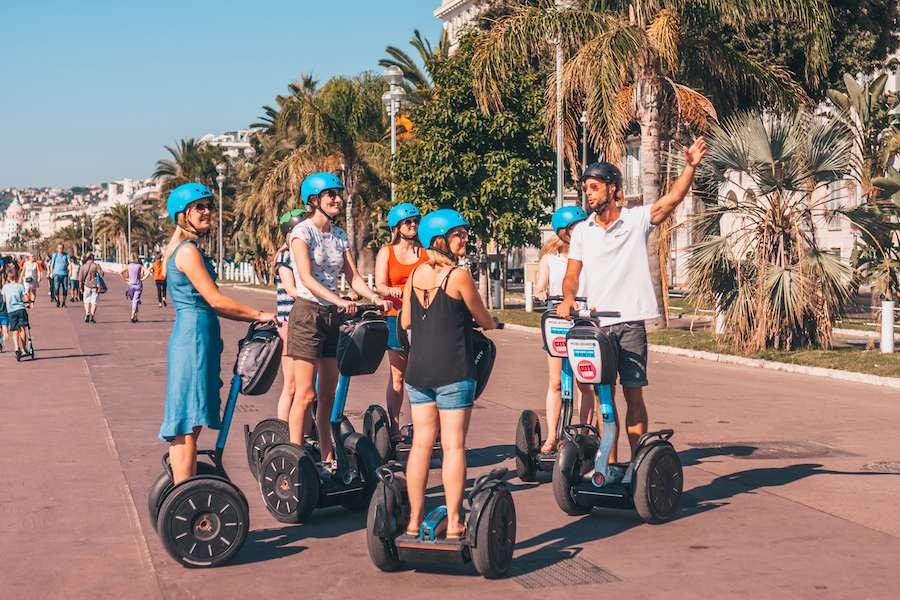
10 characteristics guests want in a tour guide
We’re all human and appreciate when people treat us with kindness and respect. So, when it comes to tactics for tour guide commentary, here are a handful of traits that guests look for in a tour guide:
1. A sense of humour
To deliver a compelling story, you may also have to be a funny tour guide . Sometimes, the world can throw curveballs and we all appreciate a reason to laugh.
You may find that funny, light-hearted stories will jive with almost any crowd. Keen to inject some humour into your script? Just ensure it’s relevant to your audience and relatable.
Remember to keep your audience in mind. Humour works best when it’s done sparingly. Jokes used for millennial backpackers might not work on retired cruise ship passengers.
2. Kindness
Pave the way for connecting with your guests by being kind enough to initiate conversation and listen to what they have to share.
Some travelers appreciate being asked what they’re hoping to get out of their experience and how far they’ve traveled to join in on your tour. Looking after small details and paying attention is a thoughtful trait that guests appreciate.
3. A guide who’s good with kids
Little ones have feelings and thoughts during their travels. After all, the whole world is new for them.
While it can be challenging to structure a tour for all ages, if you aim to be inclusive, you’re destined to win minds and hearts. Look into opportunities to highlight kid-specific topics and vantage points. Aim to schedule some pit stops along the route to keep everyone comfortable and happy.
4. Open-mindedness
Have you ever heard of the golden rule? It may seem silly, but by treating others how you would like to be treated, you help set the tone for how people in your group will interact.
Plus, when you get to know people personally, this helps to heighten their experience. After all, when guests book a tour they hope to be treated well. Help guests feel more comfortable and consider what different travelers might find interesting while on tour.
5. Informative storyteller
If you’ve been living in a region for some time, you probably have a wealth of knowledge to share. Guests expect that you’ll be well-informed and willing to share your local knowledge. Let’s say you’re looking at creative ways for how to train a tour guide , it’s key to bring your local knowledge and storytelling chops to the table.
6. Organized and punctual
Starting a tour on time is essential for every guest who made a point to be punctual and ready for things to start. Sure, mishaps happen and people find themselves in the wrong location. But as a general rule, you want to reward the guests who are prepared, by starting your tours on time.
Try sticking to time limits set for exploring an area and visiting different points of interest. In addition, guests hoping to make the most out of their trip will appreciate a tour that starts and ends right on time.
When guests book a tour, they put their faith in you to be direct and honest. Deliver on the promise and try to keep things on track with what your tour is supposed to include. Sometimes, it’s possible to get your facts wrong or not know the answer.
Ask if your guests have read up on the area and whether they have the answer. It’s not a bad idea to have a few key facts in your back pocket, so you do have the answers most of the time.
8. Adaptability
As a tour guide, you’ll potentially come across bad weather, detours or chaos from last minutechanges. Being adaptable is all a part of the role. This is where stories can keep your guests entertained if things go array.
The role of a tour guide is not without its challenges. You may have guests joining a tour with no minimal idea of what to expect, only having booked your tour because it was suggested to them. Keep things light and aim to be helpful for all travelers. This is where your uncanny ability to shift multiple hats is what makes you so good at your job.
9. Respectful
Sometimes, leading a tour may test your patience. You’ll find that respect can go pretty far, even if you don’t speak the same language. You may have to contend with late guests, irritated travelers and a wide array of personalities, but it doesn’t mean you can’t deliver an amazing tour for all.
Tour guests may not know or understand all of the expected cultural norms. Your role is to give travelers the benefit of the doubt, instead providing them with the opportunity to learn something new. And always keep your cool and remain respectful with tour guests.
10. Personality
Guests book tours with guides for a curated, hands-on and personalized experience. So, if they choose to book a tour with you, aim to dazzle them with your wealth of knowledge and personality.
Scan any negative online review and you’ll note descriptions like “cold, indifferent, boring or selfish” amongst the bad reviews. If travelers were looking for a generic experience, they could base a tour off a blog or seek out something on an audio walking tour. Make sure your personal touch is present throughout the tour.

Become a confident public speaker
If you find yourself getting nervous about speaking in front of a group of people, you’re not alone. We all worry about fumbling words or forgetting the material, but you know what’s awesome? Most people won’t know you’ve made a mistake unless you broadcast your error.
That’s part of the beauty in guiding. You can ad-lib, mix up the order and renege on your original script to make it perfect for your current tour group. Imagine guests reading reviews and coming to expect what you’re going to say next; now why would they bother booking a predictable tour?
Helpful things tips for your tour guide script:
- Focus on your guests : While it may be you doing the talking, your guests will be giving a lot of feedback with non-verbal cues. Aim to say just enough to keep them engaged and then move on.
- Forget the rules : focusing on them will only distract you. Make eye contact. Be animated with hands. Get to the point. Speak slowly. These will come naturally when you are more comfortable with public speaking. Take your time and enjoy th company of your guests.
- Invest in the story : Before the tour, pay close attention to your thoughts. Does the word can’t make a frequent appearance? If yes, it is time to change up your inner monologue. To be a better storyteller, you have to tell yourself you can . It seems like a cheesy exercise, but self-confidence makes a world of a difference.
- Create a set list : Have a few topics you know you’ll want to touch on throughout the tour to help remind you of your tour guide script.
- Take notes : You will get better with practice, but only if you learn from each attempt. Observe the audience’s reactions and write them down afterwards (not during — that would be strange). Next time, change your story up and repeat. Keep doing this until you know what details to emphasize more and what parts to leave out.
Use your tour guide script to be storyteller
As a tour guide you’re able to inform and entertain at the same time. Delivering facts while on tour doesn’t have to be a lecture. You can create a tour guide script that’s conversational and invites your guests into the experience.
Telling stories is a common way we communicate with each other. Over coffee with a friend, stories of weekend adventures are shared. At family dinners, your father brings up stories of your childhood. Even with the cashier, you may tell the story of why you forgot your reusable bags again.
You may find that you’re a natural when it comes to telling stories, and part of the reason could be that we’re hardwired to listen to them. Your past experiences, and the resulting stories, can contribute to the qualities of a good tour guide , helping you to create an incredible connection with your guests.
Whenever we listen to someone sharing a story, a large portion of our brain gets to work. Storytelling can engage three regions of the cortex : the motor, sensory and frontal. So why is storytelling important for tour guides? Want to figure out how to use storytelling to your advantage ?
In storytelling, try embracing the moment and not taking yourself too seriously. So throw a little of yourself in the content — even if the story isn’t about you. The narrator is part of the story as much as the characters are.

How to make good commentary in tour guiding
There are two types of stories to tell on tour:.
- Fun, wacky or exciting stories about a place. Told at the location of the site — either before or after listing relevant facts
- And personal stories. Best reserved for the in-transit, awkward moments of silence
For any location, there’s bound to be a large selection of stories to use on tour. But how do you choose the right ones?
It is best to base your selection around topics you care about — whether this happens to be architecture, food or history. Because when you are passionate about a topic, you will be more enthusiastic in your storytelling. And if you are excited to tell it, your listeners will be excited to hear it.
For your story collection, make a list of your own experiences. Some might be funny — even if they weren’t at the time. And some might be shocking — like you still can’t believe it happened to you. Out of all your stories, make sure they are appropriate and relate to the tour in some way.
Closing tour guide script
While you’re wrapping up the tour, you’ll want to close the experience for your guests.
Mention how you value guest feedback a few times throughout the tour. As an example of what to include in your tour commentary, make a point to share a point of interest that guests might not be able to find on their own.
Your closing tour guide commentary is also a great time to suggest other places travelers should consider, including restaurant recommendations and other tourist favourites.
And instead of telling guests that they should leave a 5-star review, which can seem disingenuous, encourage your visitors to highlight what makes this particular experience worth booking with an online review.

So, how can you become a better storyteller then?
Let’s go over important elements in crafting your story:
1. Hero/Protagonist
A story needs a character for the audience to cheer for. One they can relate to. Or one they will remember.
2. Objective
To create suspense, the main character needs a goal. The audience will listen in anticipation to find out whether the character succeeds.
3. Clear Incident
An obstacle must get in the character’s way. This makes it all the more interesting. Can they overcome it?
4. Harness emotion
You want the audience to feel what your characters are feeling. Empathy helps to connect the audience with your characters.
5. Add twists and turns
Unpredictable stories make the best ones. To keep the audience on their toes, throw unexpected twists and turns into the mix.
6. End with a punchline
Every story has a resolution, where typically the hero saves the day. No matter what type of story you share, aim to wrap up in a cheerful way — ending with a joke.
On your next tour, give storytelling a try. You might be surprised by your natural storytelling abilities and have a lot of fun while you’re at it.
Final thoughts
Right from the beginning, invite guests into the storytelling experience of your tour.
You don’t have to be the only one telling stories. Open up the floor and ask the audience questions. One story has a way of breathing other stories into life.
By giving your audience time to share, you might quickly come up with another. Also, the tour will have a more conversational tone, making everyone, including yourself, more relaxed. As a result, they’ll be more inclined to enjoy the tour and provide you with good, honest feedback.
Are you looking to hire a tour guide with these storytelling skills?

Get our list of 147 interview questions
Pick and choose from a range of questions to find the right guide for your tour company.standing support.
Related Articles

Unlock the power of feedback: how to ask your guests for reviews
“Checkfront has met our every business need, so far. Yes, we have had to reach out to Checkfront support for…
- Guest Experience

How to ask for TripAdvisor reviews
Seeking more online reviews? Learn how to ask for them in a way that gets results.
Search Blog
Subscribe to our newsletter.
Get tips and strategies to grow your business and impress your guests.
Blog Categories
- Booking Management
- Business Tips
- Marketing Strategies
- Operator Highlights
Effortless booking
Maximize online conversions with the most intuitive checkout online.
Expand revenue with our powerful Automated E-commerce tools.
Upgrade your website to industry’s best. Fresh websites. Fresh revenue.
Amplify visibility and expand earnings with integrated OTAs and local partners.
Streamline check-ins, limit risk, and amplify customer data with built-in digital waivers.
Transform data into insights. X-ray reporting gives you customer and business intelligence.
Manage high-volume walk-up customers effortlessly with POS, ticketing, and gated entry.
Automate management of staff schedules, assignments, and staff communications
Control your business precisely the way you want with endless yet easy configurability.
Allocate equipment used in various products. Prevent overbookings and maximize profits.
Grow with Xola in our constantly expanding universe of integrations and apps.
Harness customer data to drive marketing campaigns and generate repeat business.
Transform your guests into passionate brand advocates. Perfect your products & services.
Manage your business with the most powerful mobile suite in the industry.
Perfect the guest experience by giving your staff the industry’s most intuitive software.
Efficiently manage guest flow, minimize wait times, and ensure maximum satisfaction.
Ticketing & Entry
Revolutionize your guest experience: Effortless check-ins, interactive displays, secure payments.
Boost revenue with automated rave reviews, actionable insights, and loyal customer engagement.
Efficient ticketing, digital waivers, and fast check-ins enhance on-site operations and guest satisfaction.
Explore Xola Universe: 80+ apps, limitless integrations, endless growth opportunities.
Simplify check-in and boost your marketing efforts with our integrated automated digital waivers.
With SOC 2 Type II and CCPA compliance Xola exceeds industry security standards and insures your data protection.
Access real-time insights for business growth with our powerful reporting.
Remarkable and hassle-free guest experiences with waitlist and virtual queuing.
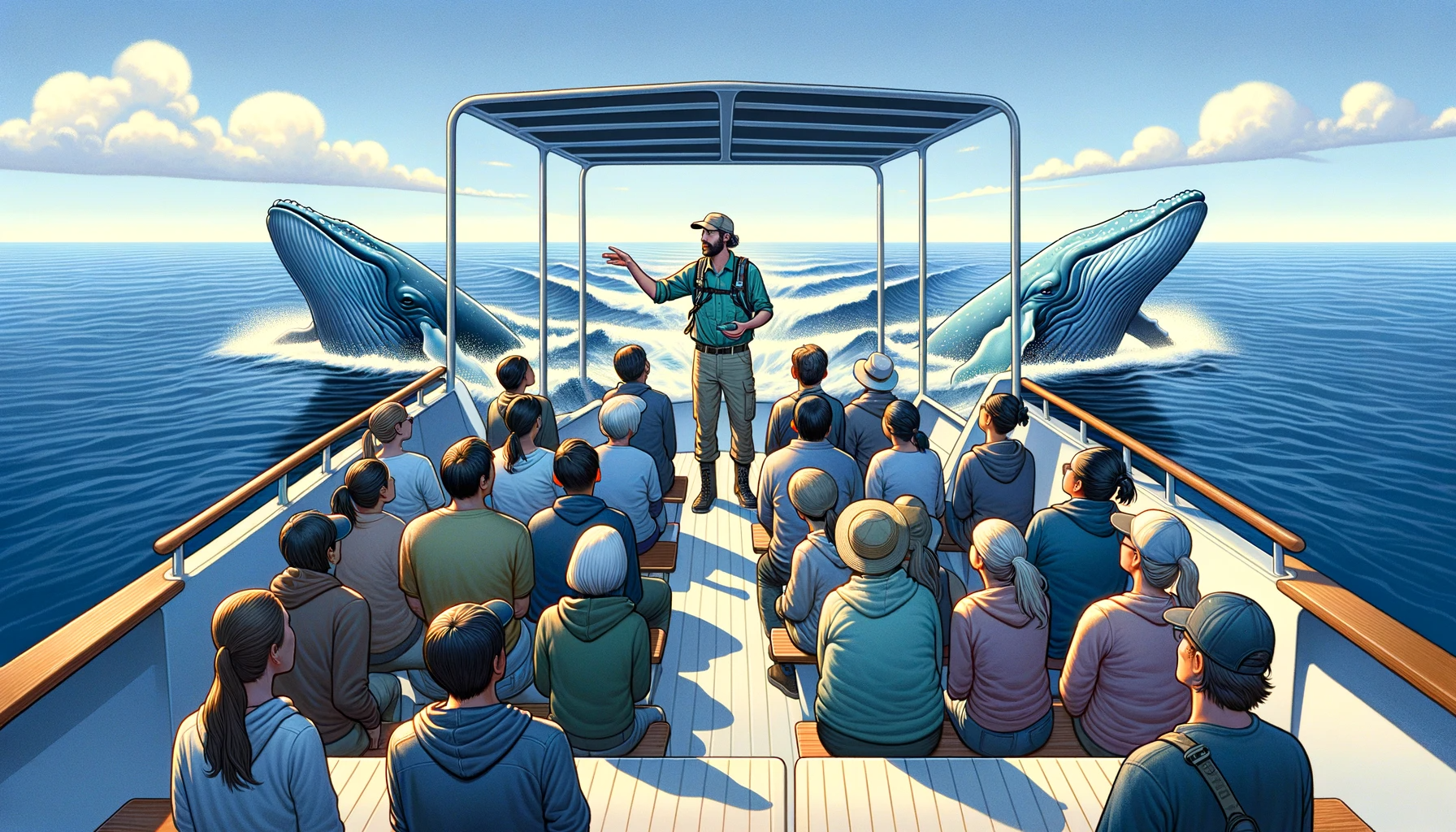
7 Skills That All Great Tour Guides Possess
- Xola University
- Business Operations
How to write a tour script that your customers will rave about

There’s nothing worse than leading a tour to a group of bored guests. When your guests lose interest in the tour experience, it’s hard to grab their attention back.
This is why the most successful tours are based on a bulletproof tour scripts, a blueprint for the experience that’s been tested and revised over time.
In this guide, we’ll dive into the art of tour script along with sharing best practices and potential pitfalls to avoid.
What is a tour script?
A tour script is the backbone of a guided experience.
On paper, it’s a well-organized outline of the information, stories, facts, and interactions that a guide will deliver during a tour.
A tour script not only provides the structure for an experience, but also weaves a narrative that keeps guests engaged. It sort of serves as a guide’s compass, ensuring that they cover key points, interact with their audience, and maintain a consistent flow throughout the tour.
What are the benefits of writing a tour script?
Even the most experienced tour guides can benefit from a well-written tour script — here’s why:
- Provides structure and clarity: A tour script acts as a roadmap, ensuring that your tour follows a clear and logical structure. It helps tour guides organize their thoughts, preventing any confusion or stumbling during the tour.
- Keeps the experience consistent: With a script in hand, each tour becomes a uniform, high-quality presentation of information and anecdotes.
- Engages your audience: A well-written script captivates an audience with engaging stories, facts, and insights.
- Gives your guide a chance to introduce themselves: A script should feature a fun introduction, allowing guests to build a personal connection with your guides right away.
- A confidence boost for guides: Armed with a ready-to-go script, tour guides feel more confident and prepared — which, in turn, translates into a more enjoyable delivery.
5 steps for writing a tour script
Let’s take a look at how you might create a compelling tour script that leaves a lasting impression on your guests.
Step 1: Define your tour’s theme and goals
Begin by clarifying the central theme and objectives of your tour. Are you highlighting historical sites, local cuisine, or natural landmarks?
Then, define your goals. Are you educating, entertaining, or both?
Let’s say you live in Philadelphia: The city has heavy historical significance, so you design a walking tour that takes guests on a chronological journey of the signing of the Declaration of Independence.
With your tour’s theme and goal in mind — “historical” and “to inform” in the example above — you can start to create a cohesive and memorable storyline.
Step 2: Research your content thoroughly
Gather detailed information about the sites, facts, and anecdotes you plan to include in your script. Double- and triple-check your facts with reputable sources, historical records, and local experts.
While you’re researching, take special note of interesting tidbits and any quirky stories that come up. These can be used as “fun facts” throughout the tour.
The more knowledgeable you are, the more engaging your narrative will be. Your research will give your tour credibility and provide you with the proper ammunition to answer guests’ questions.
Step 3: Write a captivating introduction
An engaging opening sets the tone and captures your guests’ interest from the start.
With that in mind, write an attention-grabbing introduction for each segment of your tour.
For example, at the city’s oldest building, you might start with, “Welcome to the cornerstone of our journey, the Old Town Hall. Let’s unlock its secrets together.”
This will hook your guests’ attention and keep them interested in each stop of the tour.
Step 4: Make the script interactive
Include interactive elements that encourage guest participation, like thought-provoking questions, fun facts, or challenges.
For example, when visiting a site that used to be a market, pose the following questions to your guests: “Can you imagine the bustling market that once surrounded this square? What do you think was the most popular item sold here?”
When guests actively participate in the storytelling, the experience becomes more memorable for them.
Step 5: End with a memorable conclusion
Craft a conclusion that ties together the main themes and emotions of the tour.
Let’s say your tour ends at the city square. You might say something like, “Our journey has unveiled the stories etched in these stones. As you leave, remember the resilience and spirit that continue to shape this city.”
A strong conclusion leaves guests with a sense of fulfillment and a positive impression of the tour, increasing their likelihood of sharing positive feedback.
Don’t forget to remind your guests to leace you a review on your preferred OTA platform and/or website. Including this quick call to action will motivate guests to provide you feedback once they leave your tour.
How to write a tour script for an in-person live tour
When writing a tour script for an in-person live tour, you need to consider all the factors that can make or break a face-to-face interaction.
The more your interact with your guests — like prompting them with trivia questions and sharing anecdotes — the more engaging the tour will be.
In a live tour, you can also use body language and facial expressions to enhance the storytelling experience. Think through how your gestures can complement key points, and where to establish eye contact to connect with different audience members.
Finally, pay close attention to your audience’s reactions. Adjust the pacing and delivery of your speech based on their engagement level. Make sure to leave room for spontaneous interactions and allow time for guests to ask questions.
How to write a tour script for a self-guided audio tour
Unlike live tours, where guides lead in real-time, audio tours rely solely on your script to captivate visitors.
Begin with clear and concise descriptions of each point of interest. Since you won’t be there to address questions, the script should be comprehensive and help listeners visualize their surroundings. Use navigation cues so they can progress from one point to another. Mention landmarks, specific directions, and a logical sequence to guide them.
Storytelling is just as important in a self-guided audio tour — if not more. Your script is the only thing that will keep visitors engaged; fill it with anecdotes and background information about each point of interest.
Finally, timing is key to preventing listener fatigue. Leave ample room for reflection between each audio segment.
How to write a tour script for a virtual tour
Virtual tours, like audio tours, rely solely on your script to take participants on a journey from the comfort of their screens.
Here, you’re not limited by physical constraints, so you can create a fluid narrative that transitions smoothly. Your script will guide viewers through different locations, so make sure to describe the surroundings in detail to enhance the visual component of the tour.
Again, storytelling remains essential. Your narration should foster a sense of exploration — the better the narration, the more immersed the viewer will feel.
Similar to an in-person tour, interactive prompts should also be used to keep viewers engaged throughout.
3 examples of great tour scripts
Here we’ll dissect three great tour scripts — from a cathedral in Dublin, a safari in Toronto, and a museum in Milwaukee.
We will start from here (presuming you are standing near Celtic Gravestone at shop); walk down into the north transept, or left arm, of the Cathedral. We will stop again at the Choir and then loop around into the south transept finally ending up back roughly where we started. The tour will last approximately 40 minutes and if you have any questions as we go please don’t hesitate to ask.
Then, the script begins by sharing the story of St Patrick himself.
“You may not be familiar with the story of our patron saint,” it says, ensuring that everyone in the group is on the same page. Rather than just pointing to the pictures on a window of the cathedral, the script tells the saint’s story through those pictures. The ongoing narrative captures the audience’s attention and keeps them engaged throughout the tour.
This script also includes several “optional extras,” such as an organ containing over four thousand pipes. This is a great way to give the guide some flexibility. Tour guides have the ability to read a crowd — they can then make extra stops that align with the interests of each group.
Self-guided tour
Toronto Zoo’s Scenic Safari drive-thru tour is a self-guided adventure.
The audio script starts with a message from the CEO warmly welcoming visitors to the zoo. It’s followed by important safety rules that remind visitors to remain in their vehicles, keep noise to a minimum, and drive no faster than 5 km per hour. It’s important to start a self-guided tour with any guidelines that apply to the visit since there is no physical guide present.
The zoo points out interesting facts to pique visitors’ curiosity throughout the tour, like “Did you know that a tiger can bite down with the force of 1,000 pounds” and “A ‘long call’ from an orangutan can be heard up to 2 kilometers away.”
It also uses trivia questions to keep them engaged: “What color do you think a yak’s milk is?”
Mixing educational elements with storytelling makes the safari tour even more memorable for visitors.
Virtual tour
The Milwaukee Public Museum offers 360° virtual tours , including one of a gallery focused on the common traits shared by all civilizations.
The virtual tour starts at the entrance and moves through an interactive screen that showcases each section of the Crossroads of Civilization exhibit. The script has clear navigational cues, like “You are standing before a model of the First Courtyard of that temple while it is under construction.” This gives the visitor a sense of direction within the virtual experience.
The script also keeps users engaged by offering additional features only available online — like a PDF about colors used in ancient Egyptian art. Viewers can then choose to delve into the topics they’re most interested in, making the tour feel more personalized.
6 best practices for writing an engaging tour script
Breathe life into your tour script with these key strategies:
1. Use humor
Infusing humor into your script can transform a mundane description into a memorable anecdote. Don’t be afraid to let your personality shine — and don’t hold back on witty stories or lighthearted observations that make your visitors laugh
For example, during a historical walking tour, you might playfully mention how a renowned figure’s statue seems to have witnessed centuries of gossip.
2. Tell stories
A well-told narrative can transport visitors into the past or alternate realities. Being a good storyteller is key to captivating your audience’s imagination. While guiding a tour through an art gallery, you could share the fascinating backstory behind a masterpiece, revealing the artist’s personal struggles and triumphs.
3. Use clear and simple language
Make your script easy to understand. Avoid jargon or technical language that non-experts on the subject wouldn’t understand. Imagine leading a wine-tasting tour: Instead of delving into technical terminology, you would describe the flavors and aromas in relatable terms like “notes of ripe berries” or “subtle hints of oak.”
4. Incorporate interactive elements
Engagement flourishes when your guests are actively involved. Questions, prompts, or challenges encourage them to interact with their surroundings, keeping the group interested from start to finish. For instance, while guiding a hiking trip, you could prompt hikers to look for specific bird species and share their discoveries with the group.
5. Create emotional connections
Always start your tour script by introducing yourself in a friendly manner. Then, make your passion for the said activity known. When guests see how excited you are about the tour, this excitement will translate back to them. During a walking tour, for example, you might share your history with the city, including your favorite memories there.
6. Embrace surprise and curiosity
Unexpected twists or intriguing facts spark curiosity and attract your guests’ attention. On that same walking tour, for example, you might reveal a hidden alleyway with a captivating history, leaving them eager to explore further.
3 common mistakes in tour script writing
There are a few common pitfalls that can dampen a tour script’s impact. Here are three mistakes to avoid:
1. Information overload
One of the most common mistakes is overwhelming participants with too many details. Bombarding them with an abundance of historical facts, dates, and figures can lead to information fatigue.
Instead, focus on delivering key highlights that are relevant to your narrative. For instance, on an architecture tour, avoid inundating participants with every structural detail and instead focus on the stories behind the most interesting buildings.

2. No interaction
Tour scripts that merely deliver a monologue can fall flat. Neglecting interactive elements can leave participants feeling disconnected from the experience.
To avoid this, leave room for your guests to ask questions, share their observations, or even participate in mini-activities.
During a food tour, for instance, you might ask guests to talk about their favorite meal, fostering a sense of participation.
3. Ignoring pace and timing
You can quickly lose a crowd by rushing through explanations or dwelling excessively on minor details. Dragging out a segment can also bored your guests to death.
Tour guides need to strike a balance between information overload and conciseness. They can do so by allocating appropriate time for each stop and topic. For example, on a museum tour, you’ll allot extra time to explore a major exhibit, ensuring that visitors have ample time to absorb the information.
A well-written tour script possesses the power to immerse guests in your experience. By marrying your storytelling techniques with thoughtful interactions and original humor, your scripts will result in tours that leave a lasting impression on your guests.
Writer Carla Vianna
Related Articles

When your business is growing, the thought of hiring, vetting, and managing tour guides can be daunting. In an earlier

How do OTAs work
Most tours and attractions consider Online Travel Agencies (OTAs) a crucial piece of their distribution strategy and a way to
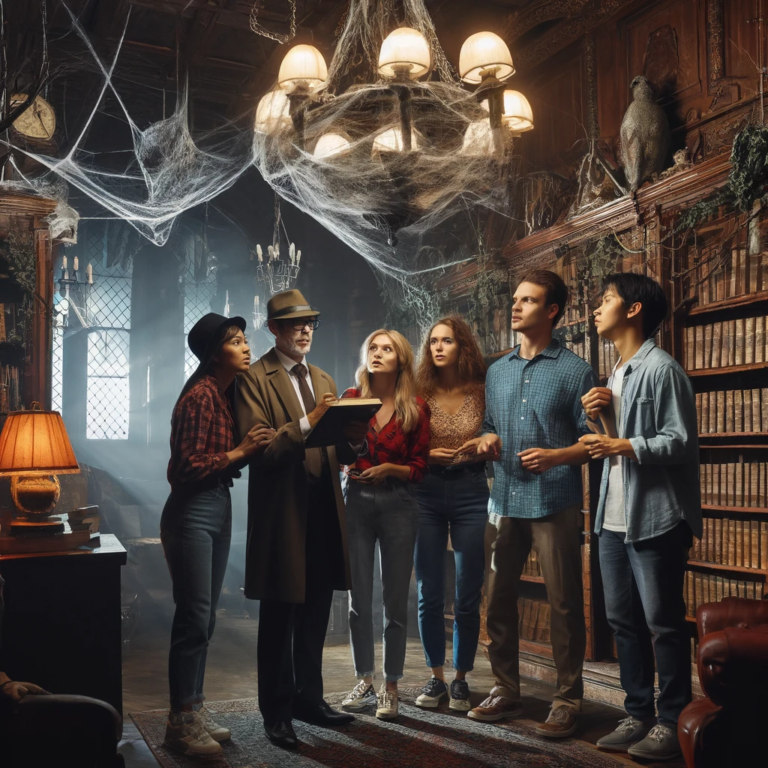
An overview of the best distribution channels
You’ve likely considered the pros and cons of listing your tours with a third-party website. While your own tour website
Get the latest news and resources.
For tours and attractions delivered straight to your inbox each week.
Transform your business now.

How to write exciting tour guide commentary

By Rezdy — 21 Feb 2016
tour guides
Updated September 2022 – You don’t want to be the tour guide that everyone dreads. The one that drones on and on about facts, figures and historical destinations that people will see along the way. We’ve all been on one of those tours before, trying to surreptitiously check our watches to count down the minutes until it’s over.
As a tour and activity provider, you want your tours to be fun, exciting, funny, and memorable. You want to be the guide that captivates a group of travelers from the first moment they step aboard the bus, and keep their attention until they are climbing out after a fun day of sightseeing. But writing your tour guide commentary can be a difficult task when you’re unsure what your customers are looking for when they sign up for your tour.
These tips will help you understand how to write a tour guide speech that ensures your customers will have a fun and memorable time.
Why is engaging commentary important for tour guides?
Knowing how to make a commentary in tour guiding that’s interesting and engaging is one of the key qualities of a good tour guide . Vivid storytelling and accurate historical accounts will improve the customer experience, and ultimately earn you a reputation for being a premier tour guide in the region. This will help increase your bookings and allow you to continue to grow your business through positive and genuine online reviews that actively drive more potential customers to your website.
What guests want out of tour guide commentary
Whether you’re wandering through the ruins of an ancient city or meandering through an art gallery while creating a live virtual tour , some things stay the same when it comes to what guests want out of tour guide commentary.
Here’s what you should keep in mind if you’re wondering how to write a tour script that captures everyone’s attention:
A sense of wonder

Make your travelers curious. Start the tour with questions and statements that evoke their interest and curiosity, such as “Have you ever wondered what it might be like to live in a beautiful castle on the coast of the sea? Well we are about to go to a building where there was drama, romance, crime, and passion.” Get them excited about where they are about to go, and let their imaginations run wild along the way.
An emotional rollercoaster
Instead of reciting facts and figures about certain buildings, tell them about the people who worked there. Use your tour commentary to explain the tragedies that happened in your little corner of the world. Allow your guests to feel anxious, excited, happy, sad, and nervous — right along with the characters that you are describing in your historical accounts.
Unexpected twists and turns
Shock them with a story they don’t expect. When you are visiting a famous monument in the city, people expect to hear about the creators, the history behind the construction and the specifications about the building itself. While these are important figures and you might want to incorporate them into your guide, you should also surprise your guests by telling a more personal story about the monument. A funny memory of a previous tour could get people laughing, or you could tell a little-known story about the history of the monument.
Tasteful humor

Whether it’s responding to customer comments with witty quips or inserting strange but amusing facts into your commentary, humor can transform an average tour into a memorable and fun experience. Laughing makes everyone feel good – including your customers. Sprinkling in a dose of good-natured humor is a fantastic way to engage people and ensure that your customers leave the experience feeling not only satisfied, but also singing your praises.
Historical facts
One of the main reasons people go on tours is to learn interesting facts that they wouldn’t be able to hear otherwise. Historical facts don’t always need to be framed by a long-winded story. Pointing out interesting details on your tour with a short, snappy historical fact is a great way to add flavor to the entire experience. The amount of historical information that you pepper into your tour commentary will ultimately wind down to your location and the type of tour itself. But even if you aren’t offering an official historical tour, the occasional fact can do wonders for engaging your audience.
Your own personality
Add your own personality to your tours. This is the most important aspect of storytelling. Be yourself, and let your own personality shine through. If you’re a little quirky, let that weirdness show. If you love to make people laugh, then tell jokes the entire way. Your personality is going to make or break the guided tour, so enjoy yourself while doing your job. A summary of effective tour guide commentary: from start to finish Need inspiration for transforming your first rough draft into a polished tour guide commentary script? Here is a walk-through of how to write a tour script that does your location justice.
Establish a “hero” to root for

People are drawn to stories about relatable characters. Creating or drawing on historical inspiration to craft a ‘hero’ character can allow you to trigger positive emotional reactions in your audience and contextualize the facts that you are sharing in your tour commentary.
Tie your stories to a theme
Disjointed stories about completely different topics can confuse audiences. When you’re writing your tour guide commentary, imagine you’re creating a collection of short stories connected by an overarching theme.
Focus on short and simple stories
It’s tricky to keep your attention focused on a long, complicated story when you’re submerged in a new environment that is brimming with exciting attractions and activities. Short and simple stories are more engaging and effective than lengthy narratives. Don’t ignore the power of a snappy and impactful story when writing your tour guide commentary.
Finish with a feel-good ending
Time to tie the experience together in a neat package wrapped up with a nice bow. A feel-good ending will ensure that everyone walks away from the tour with a solid understanding of what they learned and experienced.
Revise your script

No great story was ever finalized without several rounds of editing. Ask your friends, family, and coworkers to read your commentary and provide feedback.
A comparison is also a handy tool that provides you with greater insights into areas that need improving. Consider writing multiple versions of your script and then comparing them to identify strengths to focus on and weaknesses to eliminate.
As your business grows, you might want to consider implementing an online booking system. By ensuring your online booking system creates an easy booking process, you’ll be setting positive expectations of customer satisfaction before the tour or activity even begins. With an online booking software in place, your customers will be able to self-book at their own pace in an efficient and secure manner.
For instance, Rezdy is an automated tour booking software and tour Channel Manager that is designed specifically for tour and activity providers. Rezdy’s booking software equips your business with advanced features such as real-time availability viewer, avoiding the possibility of over/double bookings, automatic communication to keep your customers updated in the loop of any updates and reminders, and secure payment gateways that allows your customers to make secure online payments on the spot.
On the other hand, Rezdy Channel Manager also amplifies your booking levels by connecting you with thousands of agents and resellers worldwide. By using a tour operator marketplace, you’ll be able to expand your reach and broaden your distribution channels to thousands of potential customers from around the world.
You can experience everything that Rezdy has to offer firsthand by starting your FREE 21-day trial or booking a demo with our team of experts to help you understand how Rezdy can fit within your business.
If you enjoyed this article, make sure to subscribe to our newsletter , where you’ll receive up-to-date resources; from marketing tips, business operation advice, and even the latest industry news.
Start getting more bookings
Enjoy 21 days to take a look around and see if we are a good fit for your business.
No obligations, no catches, no limits, nada
Business Operations

How to create a Google Business Profile for tour operators
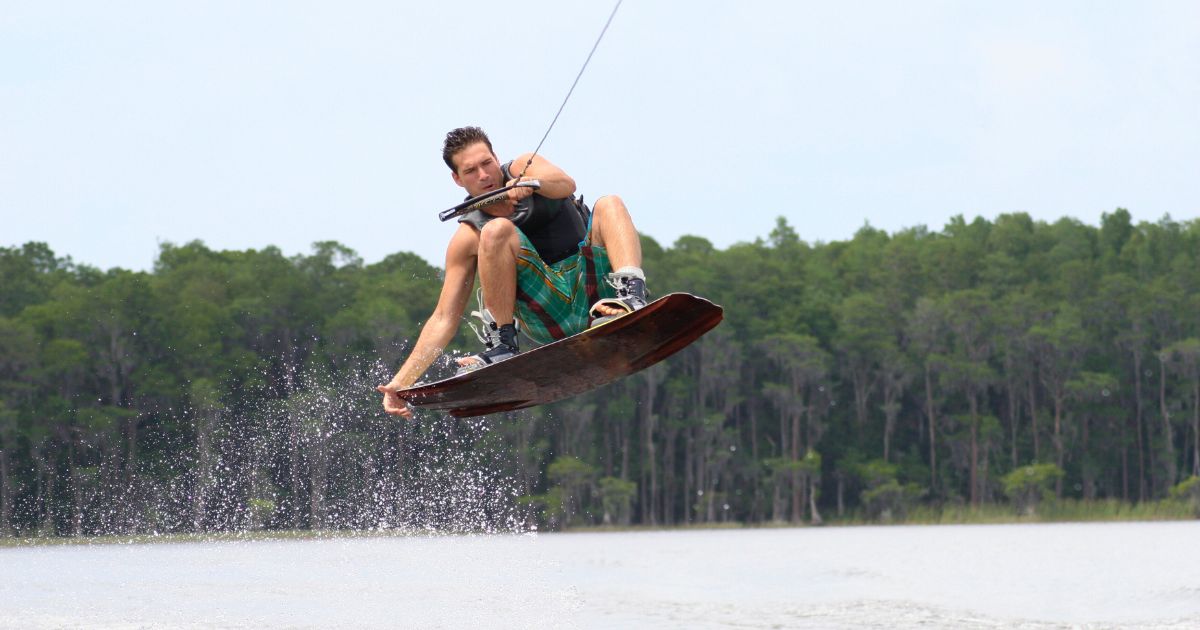
How to set up an online booking system for tour businesses

7 tips to fostering diversity & inclusion in your tour and activity business

How to write the script for my tour?
- 2024-03-07 2024-03-07
Knowing how to create the best script for a free walking tour can make all the difference as a tour guide. You want to combine charm, charisma, and storytelling, so your guests have a great experience.
A tour script acts as a guide on what to say during the tour. If this is your first time as a tour guide or you simply want to learn how to write the script for your tour, read on for more.
Before writing the script
Before creating the tour script, ensure you have already written down the places of interest and topics you want to mention on the trip. Also, list the places and topics on your itinerary in order of movement.
Start with a great introduction
The idea is to create an introduction with a “wow” effect. It should break the ice and exude confidence, so tourists are comfortable with and trust you. Welcome them, introduce yourself to them and give them a rundown of activities for the tour.

Balance the types of content
A great tour guide experience is one where the tour guide knows how to weave different kinds of content. For example, you can start with the history of a place and then give recommendations on the best places to eat or shop. Give room to answer questions.
Research and write
Ensure you give more attention to the most interesting parts of the trip. Use different sources to verify your information and write as you talk. Write your script simply and understandably, and abstain from using technical words.
End the tour with style
The ending is like the cherry on the top, so you must make a good impression on guests. Give a summary of the trip’s events, give options on things to do after the tour, thank them, and wish them a good day.
Finally, be mindful of time, practice, and always improve your script. Join the biggest touring group, register as a tour guide on BeOriginal tours and start your own touring gig! It’s easy.
Table of Contents
Related Posts

Top 3 Moroccan cities and their famous dishes
For world explorers with a love for culinary tourism, a vacation in the charming country of Morocco is never off

The London Nightlife Music Guide
The environment of music in London If you are a music buff, London promises to magnetize and captivate you by
Leave a Reply Cancel reply
Your email address will not be published. Required fields are marked *
Save my name, email, and website in this browser for the next time I comment.
Check out our other cities
Berlin tours.
- Original Berlin Tours
- Berlin Pub Crawl
- Pub Crawl Berlin
- Free Berlin Tours
- More Berlin Tours
- Cold War Tour Berlin
- World War Tour Berlin
- Sachsenhausen Tour
Barcelona Tours
- Free Barcelona Tours
- Barcelona Pub Crawl
- Pub Crawl Barcelona
Budapest Tours
- Free Budapest Tours
- Budapest Bar Crawl
- Pub Crawl Budapest
Madrid Tours
- Madrid Pub Crawl
- Pub Crawl Madrid
- Nice Pub Crawl
- Nice Bar Crawl
- Pub Crawl Nice
Amsterdam Tours
- Amsterdam Pub Crawl
- Bar Crawl Amsterdam
Paris Tours
- Pub Crawl Paris
Dublin Tours
- Pub Crawl Dublin
Warsaw Tours
- Pub Crawl Warsaw
Stockholm Tours
- Pub Crawl Stockholm
Other Links
- Original Pub Crawls
- Be Original Tours
- Original Free Tours
- E-Ticket Trail
How to Write a Tour Guide Script?

Table of Contents
Every trip needs a plan for the tour guide. Your visitors come to you excited and curious to see a new place, learn something new, and have a good time.
You are the one who lives up to their hopes. So, carefully preparing the script ahead of time with good communication and stories will help you feel confident when speaking in front of your customers and give them a good time.
There are many things you need to do to write good tour guide stories that will impress your customers. But don’t worry, this guide will help you out how to write a tour guide script?. Why don’t we learn together?
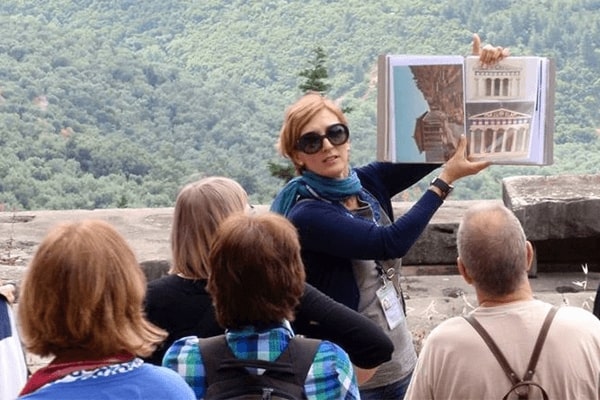
Researching the Destination
Key points of interest and unique features.

In the first step, you need to figure out what the most interesting and unique things are about the place you want to write a tour guide story for.
This will make it easy for you to fill out the rest of your script in the next step and make sure you don’t miss any important parts of the destination.
If you want to give customers full, high-quality information about a location, you have to know a lot about it. This takes a lot of online and offline research. Here are some things you need to work on, according to us:
- Read materials from the official tourism websites of the country or the province: They provide quite complete and trustworthy information about the destination.
- Read more research, publications and books related: These sources are great to get more valuable details about the destination.
- Read content from other travel agencies blogs
- Conduct a field trip to that place
- Join other tours to learn from their tour guide scripts
When you read information from unofficial sources, you might find different pieces of information that don’t match up. If you want to use this information in your script, make sure to check it twice. Make sure that all the information you give your customers is right.
In addition to learning about the location, you should always learn more about other things. So that if a customer ever asks you a question, you can always answer it with confidence.
This shows your clients that you are a real expert.
Understanding the Target Audience
Who is the target audience for the tour.
After doing study on the destination, the next step is to figure out who you want to reach.
This step is important, but a lot of people skip it. When you know who you’re writing for, you can make sure the story is right for them. Because each customer group has different needs and wants.
Here are the most basic things you need to know to figure out who they are:
- What is their age group?
- Their occupation?
- Their level of education?
- Where are they from?
Once you have identified the target audience for your tour, continue with the following questions to understand them:
- What are their needs, preferences, and goals?
- How do they communicate and consume information?
- What are their cultural norms and values?
After having a full understanding of your customers, you can estimate how receptive they would be to different parts of your tour guide script. You can foresee what emotions may trigger, offend and how to better deliver the information and communicate with them.
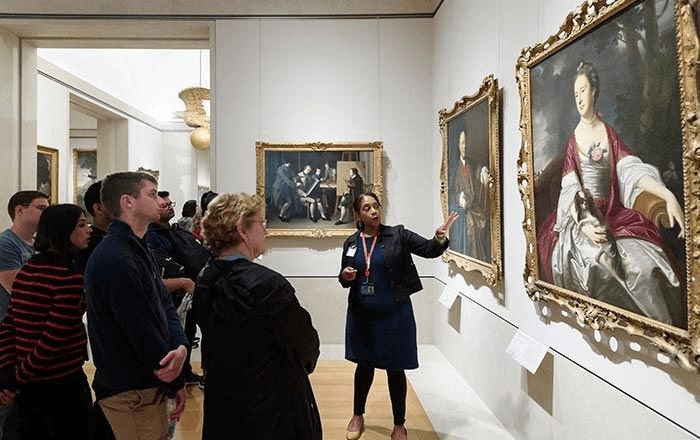
Using language and tone appropriate for the audience
Next, let’s define the language and tone to use for your tour guide script. Keep in mind that how you are saying is as important as what you are saying. So, depending on who your target audience is, use language and tone that suits them.
1. Children : Use simple language, avoid advanced words and technical terms. Use a cheerful tone to create closeness and friendliness.
For example: “Today, we are going to talk about some animals that existed a long long time ago – 65 million years ago! Does anyone know the name of this animal? Show me your hand! I’m sure you have heard about dinosaurs and have seen them in many cartoons…”
2. Young adults : With young people, you can use advanced words to convey the ideas better. Be comfortable to use slang, trendy expressions and jokes with a humorous tone because they would love that.
For example: “Do you know how long dinosaurs lived? The same as short ones! Just kidding. Dinosaur lifespan has been debated for many years….”
3. Seniors : With seniors, you should avoid using the language of the young generation. Use more formal language, and being respectful is extremely important.
4. Foreign visitors : When explaining to foreign visitors the history or culture of your country, you should speak slowly, and be patient with them when talking about things they may find unfamiliar with.
Okay this is important: You should avoid using slang, or expressions that might be confusing, offensive, or inappropriate for your audience.
In addition, depending on the topic you talk about, you also have to adjust the language and tone accordingly.
For example: When you’re talking about history or wars, use formal language and a heroic tone. If you’re talking about entertaining topics, use casual language and a cheerful tone.
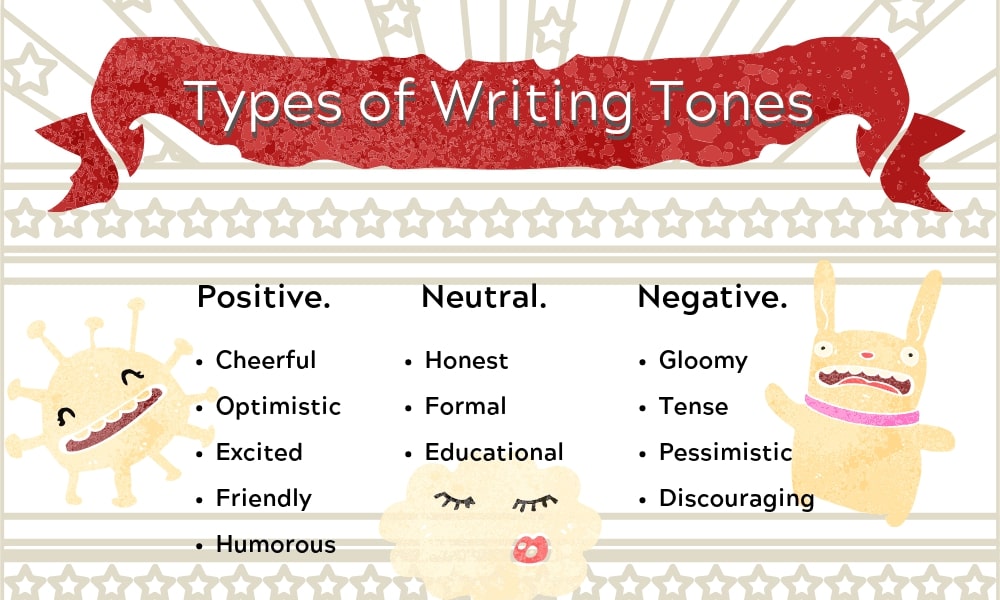
Incorporating humor, anecdotes, and interactive elements
Trying to keep people’s attention for a long time is not easy. You can picture tourists yawning, being distracted, or doing their own thing while the tour guide talks with emotion. This kind of thing happens all the time in real life.
Don’t worry, you can make things better by adding humor, stories, and interactive parts. If your tour guide script is just a list of facts and doesn’t have any of these things, your clients will soon get bored and tired of it.
People will also be able to remember the important details and information better, and they will feel more connected to the location, which will make the trip a memorable one for them.

Humor can lighten the mood immediately. The audience is more likely to remember you if you make them laugh and in turn remember your ideas and key points. You can show your sense of humor throughout the whole tour.
For example: “I’d like to take some time to inform you about brief safety
precautions. Always remember to S-M-I-L-E. Can I see your beautiful smiles? Very good. So SM-I-L-E for S, secure your personal belongings…”
Stories keep tourists curious about what you are going to tell. As a result, it is a tool to grab everyone’s attention and keep them focused. Tell stories whenever possible. If you can convey information by storytelling instead of other forms, do it.
Tips for great stories for your tour guide:
- Have a clear message or information for your story that you want to tell your tourists
- Show them, don’t tell them
- Create tension in your story and resolve it
The don’ts:
- Don’t overwhelm your story with unnecessary details
- Don’t make it too long
Beside humor, and stories, there are other interactive elements that you can incorporate in your tour guiding.
3. Other interactive elements:
- Ask the audience
- Try out a quiz
- Make eye contact
- Body language
Not everyone was born with a natural sense of humor or mastered the art of storytelling. But the good news is that you can learn and practice to be good at it.
Here are some tips to help you improve:
a. Join tours and learn from great tour guides b. Listen to good talks on any topic c. Observe people around you in real life and on the internet
If you really pay attention and observe, you can learn a lot from your everyday life. Whenever you come across a good joke or an interesting expression, memorize it and write it down in a notebook. So that you can use them in your tour guide script later!
Structuring the Script
Now you are ready to start writing. The next step is to plan out how the tour guide story will be put together. Before you write the details, your presentation will be more convincing and professional if it has a clear and logical format.
A tour guide scripts is usually made up of 5 main parts:
- Introduce yourself to the group: You have to show your credibility such as your working experience, studies, time you have spent in the city, so that the travelers can have trust in you, and believe that they have made the right decision to book the tour with you.
- Regulations and reminders during visiting the destination
- Outline the tour content: Sections and the main ideas of each one. Let customers know what to expect from you and give them a sense of direction throughout the journey.
- Detailed content of each section
- Closing: Summarize all of the main points of the tour
You already knew about the destination’s main places of interest based on what you learned and found in step 1. Now, decide how you should put these points together so that they make sense.
In places like museums, the aisles and material are set up in a way that encourages people to look around. Then you just need to make an outline of the text based on that.
As for other tourist spots that aren’t like that, like historical sites or beautiful places, you’ll have to figure out the plan. There are different ways to put your information in order:
- Chronological sequence
- Spatial order
- The order of things
- Topical order
Craft captivating tour guide scripts effortlessly with our tour guide script tips. Seamlessly integrated with TravelerWp , our WordPress theme with a powerful booking engine . Elevate your tour guiding today!
Writing Techniques
After you have a clear and sensible structure, you will write the tour guide scripts’ content details. As you know, there are many ways to write, and each one is good for something different. But for a tour script, we strongly suggest that you use detailed language and language that appeals to the senses.
Using descriptive language and vivid imagery
Words used to describe things or acts are called descriptive language. They also include rhetorical arts like comparison, imagery, and metaphor.
When you read words that describe things, you get a clear picture in your mind. When describing a real tourist location, using descriptive language will help people see and feel the beauty of that place more deeply. On the other hand, if you use descriptive words in your stories, your readers will feel like they are right there with you.
You should also use sensory language in your tour guide writing, along with descriptive language. The sensory language uses all five senses to make your customers’ experience better. By using sound, sight, smell, touch, and taste, you can make your audience’s imaginations come alive.
Example: “Let me take you to 65 million years ago… The dinosaurs are playing and talking joyfully to each other at a waterfall (PERSONIFICATION & DESCRIBE ACTION). The waterfall is aquarium-blue (DESCRIBE COLOR). It is pounding the rocks and tumbling down the mountain (DESCRIBE LOUD SOUND). The bliss-pool at the bottom was varnish clear (CREATIVE). It looked like a wall of blue satin threaded with silver (DESCRIBE TEXTURE). The flowers next to it were nodding gently, casting a honey sweet smell (DESCRIBE SMELL).”
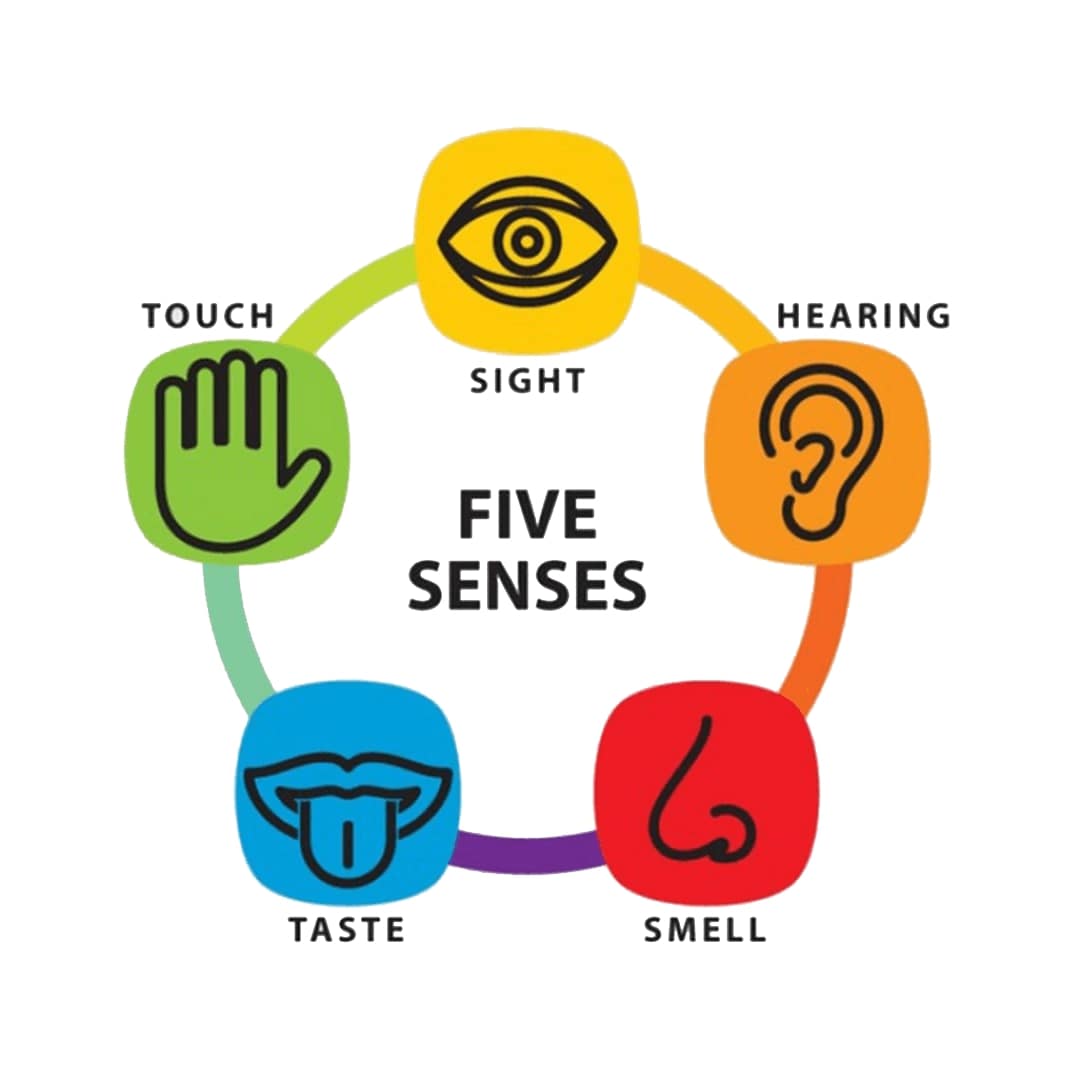
Practical Tips
With our recommendations on how to structure your tour scripts and writing tips, we’re sure that you have all the necessary tools to write good tour scripts for your own tour. Now you are going to jump into writing and finish your first draft!
Before finalizing your work, we recommend you should do the follow practical tips to make sure your tour script perfect and align with the goals that you set in the beginning:
- Making sure the tour guide writing is short and easy to understand: You should look at the length of your tour plan again and make sure it’s long enough to cover all the key spots.
- Before using it with a group, you should test the script: No matter how good you think your writing is, you need to try it out on real people. The fastest and most direct way to improve your script is to get comments from the audience. Try to solve their issues:
a. What is making them crazy: Provide more information b. Questions about the tour guide script: Prepare the answers to the questions ahead of time, because you might be asked similar ones on your real tour. c. Comments on how you present the material, the language you use, the interactive parts, the tone of voice, etc.: Think about them and improve them as needed
Practicing how to say the lines and how fast or slow to say them: Practice often. The more you practice, the more confident you will feel when you actually give the presentation to your customers.

Example of a Tour Guide Script
Example of good tour guide content: A tour guide script for a dinosaur tour, by REDPATH MUSEUM SOCIETY of McGill University.
The author put together his story in a way that makes sense and flows well. The main content is set up so that it tells you about each type of dinosaur in order. He used a story to explain to tourists why the dinosaurs died out. At the end, he told some fun stories about dinosaurs.
Here is the full tour guide script:
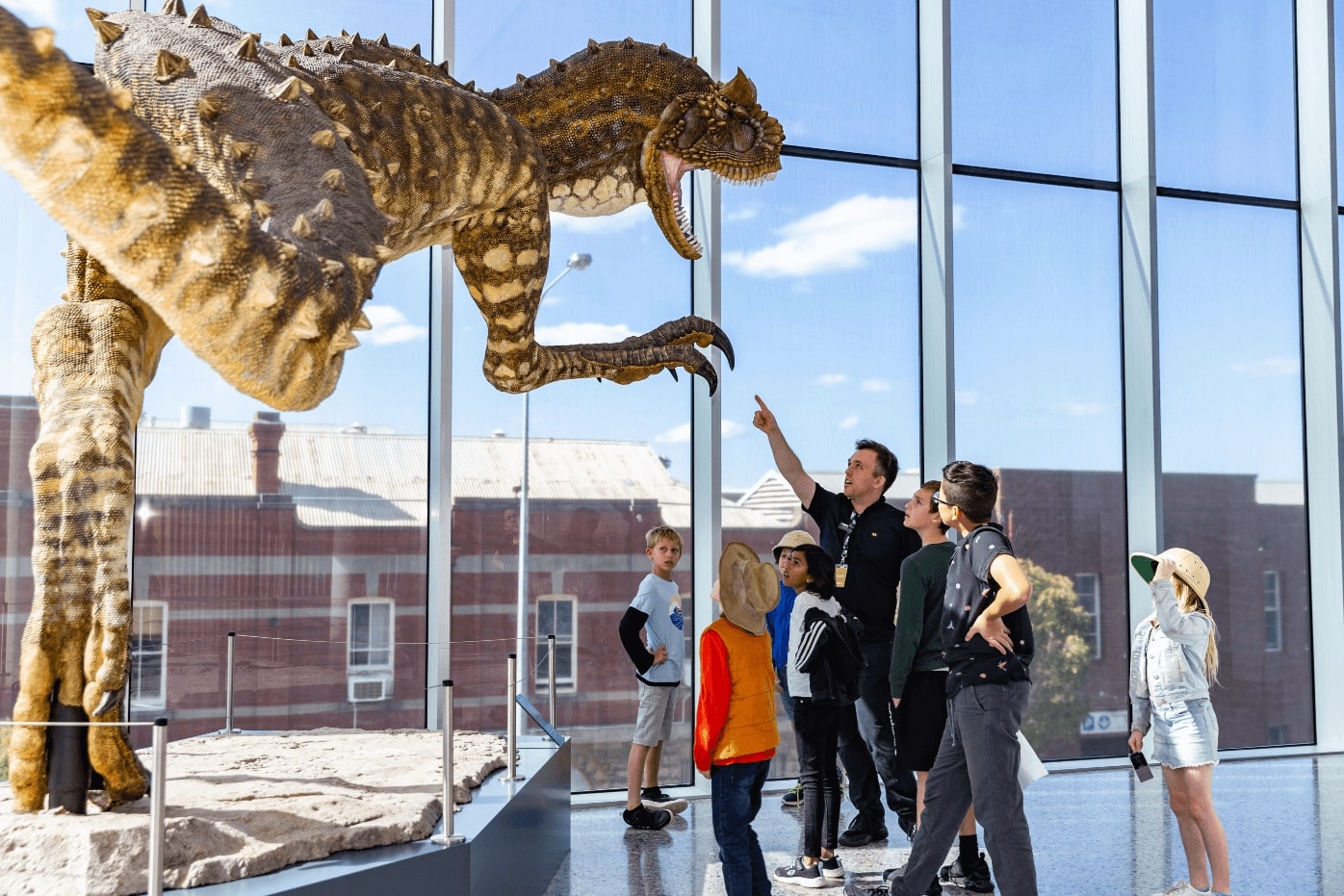
DINOSAUR TOUR
Location, 2nd floor, main gallery A note about the dinosaur bones: Most of the bones in the museum are plaster casts from actual bones – this is due to the fragility and value of actual bones. Real bones are made of rock and are therefore very heavy – they cannot be mounted in life-like poses the same way a lighter cast can. However, a plaster cast, as an exact replica of a real bone, is as good as originals.
The Gorgosaurus (formerly Albertosaurus): This Gorgosaurus, meaning ‘fierce lizard’, was first described in 1914 by Canadian paleontologist Lawrence Lambe. It is a smaller, slightly older cousin of the famous Tyrannosaurus rex. This specimen is a juvenile, probably equivalent to a human teenager, and is only two-thirds the adult size. Among the largest land predators ever to walk to planet, this animal had a colossal appetite. Razor-sharp teeth jaggedly arranged along its massive jaws, enormous jaw muscles that protruded from the extra holes you see in its skull and small but powerful forearms combined to enable theGorgosaurus to eat rapidly.
Stones called gastroliths were also used to further grind up meat were in the animal’s stomach. Gorgosaurus was very fast, probably moving along much like it is posed here. Look at the length of its tail relative to the rest of its body – contrary to so many years of dinosaur representation, they did not drag their tails along the ground, but rather used them for balance. How do we know this? There have been fossils of dinosaur track-ways discovered that have rows of feet, but no line between them to indicate a dragging tail.
The Thescelosaurus
The Thescelosaurus specimen on display in the Dawson gallery was collected from southern Saskatchewan in May 2008 by the McGill Vertebrate Paleontology Field School. This small, bipedal dinosaur was a herbivore, belonging to a large group of dinosaurs called the ‘ornithiopods’.Thescelosaurus are known only from the latest Cretaceous period of North America, dating back 65 million years to a time just before the extinction of the dinosaurs. This dinosaur would have lived alongside Tyrannosaurus rex, Triceratops, the duck-billed Edmontosaurus and several small species of theropod (bipedal carnivorous dinosaurs) like Saurornitholestes and Dromaeosaurus.
There are three known species of Thescelosaurus: Thescelosaurus assiniboiensis, Thescelosaurus neglectus and Thescelosaurus garbanii. This specimen likely belongs to Thescelosaurus assiniboiensis, which was newly described in 2012. The fossil comprises of an articulated vertebral column, a large portion of the rib cage, part of a scapula (shoulder blade) and a foot. After it was collected from the field, the specimen was leant to McGill under loan from the Royal Saskatchewan Museum. The long process of preparing the fossil out of its sandstone matrix took four years, but the effort was worth it!
The Dromaeosaurus :
The Dromaeosaurus (‘running lizard’), is a dinosaur species found mainly in Alberta. Despite their relatively small size, they were very successful pack hunters, often taking down prey much larger then themselves.
With their razor-like claws and teeth, and their fearsome speed, a group of these raptors could easily overcome a much larger dinosaur before it had time to react. One large dinosaur would make a handsome meal for a group of much smaller Dromaeosaurs. Like the Gorgosarus, these dinosaurs also had long tails that they most likely used to maintain balance while pursuing their prey. TheDromaeosaurus may have developed a form of society out of the necessity to compete with much larger predators.
The Archaeopteryx :
Archaeopteryx (‘ancient wing’) is the world’s oldest bird. Only ten fossils of this animal have ever been found, all from a place in Germany called Solenhofen. When the Archaeopteryx was first found, the feather impressions were accidental erased because the specimen was thought to be small carnivorous dinosaur. We now know that many small carnivorous dinosaurs also had feathers which were used, not for flight, but for insulation and/or sexual display.
Why have no dinosaur fossils been found in Quebec? While dinosaurs almost certainly roamed around parts of Quebec and Ontario, no fossils have been found in this area. The fossils we find in Montreal today are of the Ordovician era; 200 million years before dinosaurs evolved. Remember the famous ice caps that ravaged our territory a million years ago? The weight of the ice gouged away 450 million years of sedimentary rock, along with any fossils that were preserved within it. Alberta, Saskatchewan and Manitoba have undergone a different set of geological events and therefore the dinosaur-bearing rocks in these provinces are still intact.
What happened to the dinosaurs?
At the end of the Late Cretaceous period 65 million year ago, a huge meteorite crashed into the Gulf of Mexico, leaving a crater 100km across. It was likely not the impact itself that killed most of the animals and plants of the time, but the clouds of dust the collision threw up into the air. For as long as a hundred years, these clouds obscured the sunlight, affecting the whole food chain: first, the plants could no longer grow, next the herbivores could no longer eat, and then the carnivores ran out of food. The daily hours of sunlight had become too few for life to continue on its previous course. At this point, it is thought the far more resourceful mammals began to prosper, spread and diversify, leading to the eventual ascent of our own species. If the dinosaurs had never disappeared, it is unlikely that we would have had a chance against them. (information from Bruno Paul Stenson, M.A.)
Outline of Mesozoic Era: 248 to 65 million years ago
Triassic Period 248-206 MYA – The world was one major landmass called Pangea, it consisted of dry landscapes, gingkoes, ferns and cycads (similar to palms), but no flowering plants. Animals included the first dinosaurs and small early mammals. Jurassic Period 206-144 MYA – Pangea split into a northern continent (Laurasia) and a southern continent (Gondwana). It was a more humid and cooler climate than before with conifers, cycads, tree ferns and gingkoes, but probably no flowering plants. Cretaceous Period 114-65 MYA – Continents split further and North America is split by a shallow sea extending from Hudson Bay to the Gulf of Mexico. Western North America connected to eastern Asia and the climates were seasonal. The first flowering plants were becoming more dominant than conifers and cycads. Grasses were not yet present, as this type of plant did not evolved until the Cenozoic age. More species of dinosaurs evolved during the Cretaceous period than during the Triassic and Jurassic periods combined.
Interesting Dinosaur Facts :
- Physiology: Like mammals, most dinosaurs could walk and breath at the same time. Most other reptiles can’t do this because the muscles that control their limbs are also associated with their breathing.
- Senses: Therapods (all carnivorous dinosaurs) had well developed eyes and vision centres in the brain, suggesting they relied on sight to locate prey. Some plant eaters seem to have relied on smell to detect predators.
- Feeding: Sauropods (‘long-necked dinosaurs’) used stones in their gizzards to grind down plant matter swallowed whole. Ceratopsians (horned dinosaurs) used grinding teeth. Therapods (all carnivorous dinosaurs) had large heads, blade-like teeth, and an extra joint in the jaw to accommodate large pieces of food.
- Sexual Dimorphism: Paleontologists speculate that Tyranosaurus rex males were grassile, while the females were heavier. Some hadrosaurs (‘duck-billed dinosaurs’) males may have had long head crests, while females had shorter ones. In Protoceratops ( a small horned dinosaur), the males had large frills while the females appear to have had smaller ones.
- Speed: Short femur (thigh bone) and long tibia (shin bone) are indicators of a fast runner. Small therapods had disproportionately long legs built for speed and could reach speeds up to 25 kph. Because of their large size, larger therapods we slower, reaching speeds of about 15 kph. Sauropods were slow and were incapable of running.
- Social Groupings: Large therapods (carnivorous dinosaurs)may have been solitary or moved in pairs, although there is also evidence that they may have hunted in packs. Small therapods moved in groups of tens of individuals. Sauropods moved in groups of a dozen. Ceratopsians moved in herds of hundreds or thousands.
You are at the end of this article. There are so many things to learn and practice right? We agree that writing a good tour guide script is not an easy task. Let’s summarize what you have learned so far! We have gone through step-by step instructions to write a good tour guide script.
- Researching the destination
- Understand the target audience
- Structuring the script
- Writing techniques
- Practical tips
- Example of good tour guide script
We hope the article helps. And we believe that by implementing these strategies, tips and advice that we provided, you can create your own tour guide script that amazes your tourists.

Unleash The Full Potential of Your Travel Agency Website with Traveler
- NEW VERSION 3.1.1 – Upsell and Trust Badges For Partner by traveler 16/11/2023
- How to Increase Bookings for Your B&B? by traveler 13/09/2023
- NEW VERSION 3.1.0 – New Update Solo Tour Demo, Mega Menu, Upsell Power and Trust Badges by traveler 11/09/2023
- How To Optimize Blog Content for Your Bed & Breakfast Business? by traveler 10/09/2023
- Top 5 Ways to Advertise Your Bed and Breakfast Business by traveler 10/09/2023
Related Posts
How to increase bookings for your b&b, how to optimize blog content for your bed & breakfast business, top 5 ways to advertise your bed and breakfast business.
- Privacy Policy
- Support Policy
- Refund policy
- Term and Conditions
Traveler design by ShineCommerce © All rights reserved
How to write the script for my tour?
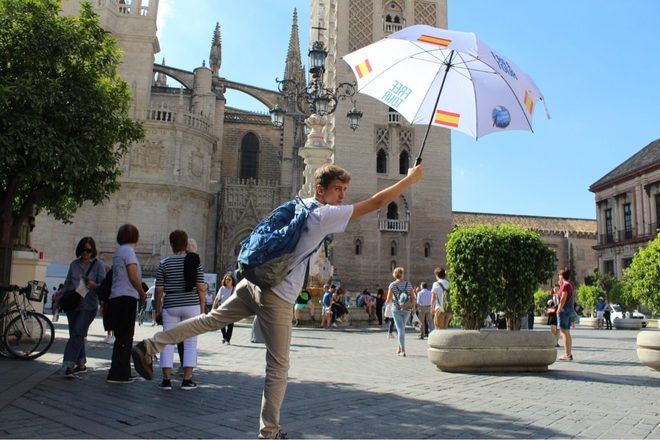
A free walking tour is like a play: each word is of vital importance to transmit your speech in the best way and touch the emotions of your travelers. In this post, we will explain how to create an amazing script, which will be the bible of your journey. It will allow you to choose the best content in order to create an incredible experience and receive lots of money.
Before creating the tour script
Before starting to write the script, you should be aware of at least these 2 elements:
- Make sure to have identified all the places of interest (ex: town hall) and topics (ex: gastronomy) that you want to introduce throughout the tour.
- Make sure to have ordered all the places and topics to create your tour itinerary , taking into account a coherent structure and the shortest distance between each stop (max. 2-3 minutes).
If you have any questions about that, we strongly advise you to read this post first to define the itinerary of your tour.
1. Create a great introduction
Think about it as if it were the first few minutes of a movie or the first pages of a book. You have to create the “WOW” effect.

Your tour introduction has several goals:
- Captivate your travelers: you have to show travelers how special this experience will be with you and that it was worth booking. Make it clear that you will exceed the expectations they have.
- Break the ice: travelers don’t know you yet, they don’t know your city, or the other travelers in the group. It’s important to reduce this tension from the beginning.
- Give confidence: You must show your professionalism and credibility so that travelers can trust what you explain.
This introduction is usually short (5 minutes) and is normally structured like this:
- Say hello, welcome them , thank them for booking with you, introduce the tour and get the travelers’ interest.
- Introduce yourself to the group (and sometimes the travelers among them): here you have to show your credibility (experience, studies, time spent in the city …) so that the travelers know that they made the best decision booking your experience.
- Tour structure (key sights) and practical information (duration, if there will be a break to go to the bathroom, the payment concept, …). You make sure travelers know what to expect from you and to show them your professionalism.
- Get travelers’ interest and give time for some practical questions.
Then, in the same place, gurus usually start with their first explanations (most of the time, it’s an historical introduction of the city and the country). This explanation is normally a bit longer than the others (10-15 minutes) and serves to put the context for the rest of the tour. It’s also important to start at the meeting point so late travelers can still join.
2. Balance the types of content

It’s important to find a balance between the different kinds of content to include in your tour so it’s easy for them to follow you.
These are the different types of content that your tour must include:
- History: it’s usually the main focus for the content of your tour and helps to introduce the rest of your explanations. In many cases, travelers have already read part of the story before joining the tour in their travel guide or online but it’s important to explain it as travelers expect it and to put everything in context. It can be both the history of a building or monument, as well as the history related to a topic (specific period, important social movement, gastronomy, …).
- Anecdotes and curious legends: that’s what makes the difference for travelers and what they will remember, since it’s usually something that surprises them and that they don’t usually know about. It touches travelers’ emotions and keeps their attention. This kind of content is usually explained after the historical context.
- Customs and recommendations: Travelers who participate in a free walking tour don’t just want to listen to stories. They also want to be able to understand the city as a local, live as a local and go to places that are not as touristy. That’s why it’s important to include some local customs and personal recommendations in your tour.
You can balance the content both from one spot to another and within the same explanation of the place! (Ex: have a moment to talk just about recommendations or include recommendations after an historical overview).
3. Find the content and write the tour script
Now that you know the type of content you need, it’s time to search for it.
There is no miracle , you will have to read a lot, watch many documentaries, visit many places, talk to the tourist office, experts … and that takes a while.

While doing this research, also consider the following things:
- Keep only the most essential and relevant information: you can talk for hours about some places, so it’s important to select only the most interesting part for the traveler.
- Open your search beyond the content of the tour: If you read more than the content of your tour, you’ll be able to show to travelers that you are a true professional by answering all their doubts, which often go beyond what you explain on the tour.
- Verify the data: you can’t trust just one single source of information. Cross-check the data to ensure your script’s content is reliable.
- Write in an understandable way for everyone: sometimes travelers don’t know anything about the topics you are dealing with on your tour, so you have to explain it in a simple and clear way and avoid technical words.
- Think of practical information: free walking tours give travelers a general overview of what the city can offer, so they can then visit some places on their own. That’s why it’s important to know the practical information of the most important places in your city and to include them in your tour: opening hours, ticket prices, how to get there, …
4. Think of the best way to explain your stop
Just as you did by selecting the type of content for your tour, you must also balance the different ways of transmitting this content, which will create a much more enjoyable experience.
Maybe you can explain a personal story, or perform a historical event with travelers, even teach them how to prepare a traditional recipe, or make a quiz … You can find more information on this topic by consulting this post on how to create a more interactive tour and in this post on how to create amazing explanations .
In addition, you can include your travelers better by asking them questions , as we explain in more detail here .
5. Create natural transitions in your itinerary

Maintaining the logic between your explanations can be achieved when you have good transitions, because it gives a common thread to the whole tour. Your experience is not just going from one place to another, you have to see it as a set where each explanation tells a story that supports the overall idea of your experience, like a movie with different scenes.
Good transitions allow travelers to better remember key facts and will help make the journey more meaningful. It also helps you memorize your speech better and will keep travelers interested to follow the whole tour.
You have to add these transitions at the end of the stop or when starting the next one. It can also serve to get travelers’ attention and surprise them, as we explain in this post .
6. End the tour with style

The final part of the tour has to be the cherry on top. Like a good movie, the final part is essential and will be the last impression travelers get before paying you. It’s important to make an emotional ending , so travelers realize how awesome this experience has been with you.
Many gurus achieve this by choosing a very special place to end their tour, such as a vantage point with a spectacular view of the city. Others choose a site that is relevant to the common thread of their tour, because of the history of that place.
What is usually said at the end:
- Summarize the most important elements of the tour , show travelers that the experience was amazing and that they have learned a lot with you.
- Give options on things to do after the tour.
- Remember that they will receive an automatic email from GuruWalk to leave a review on your profile and explain why it’s so important they do so (it allows you to get more bookings).
- Thank them and wish them a good stay.
If they give you an applause, it means that the tour and its ending have been a success.
7. Control time, practice and improve the tour script

Remember, the best free walking tours last between 2 and 3 hours. Shorter than that, travelers will feel that the experience was not complete and longer, you will tire them out too much and they will end up bored.
With Google Maps, you can approximate the time you will need to walk. In this example of an itinerary in Brussels, which is a 2-hour tour, you walk about 40 minutes, leaving 1h20 to tell stories. Only the main stops are represented there, but there are about 10 stops, which makes 10 minutes per stop, taking into account that the first stop is usually longer, so it’s fine.

So, you can put a timer so that each stop on your script is no more than 10 minutes. It is not an absolute rule. There are places that require more time and others less.
Now that you’ve added or removed content from the tour script, it’s time to practice it at home and learn it well.
Once you have it ready, practice it with a friend or family member in real conditions. This person can also give you valuable feedback to improve your speech. Look at the time before starting the tour and halfway through the tour, verify your progress at the halfway point to make sure you are on target. If not, you will have to add or remove content.
You have to constantly review your tour script . With practice, you will realize what is more or less interesting to travelers.
However, keep in mind that the speed of the group is always different. So you have to identify less important explanations or places that you could skip or add to meet the duration of the tour.
It’s important to memorize the tour script perfectly. In front of the group of travelers, you can’t doubt or read something from a notebook. Otherwise, you may lose all your credibility (and money… ).
What’s next?
Do you have your tour script ready and are you learning it? Before doing your first tours with travelers, check out this post about the most common mistakes when starting as a tour guide and how to avoid them.
Your email address will not be published. Required fields are marked *
Jerry Seinfeld’s media tour could’ve been a plot on ‘Seinfeld’
Jerry Seinfeld has been everywhere, talking to just about everyone, on late-night shows and morning ones, on podcasts and in newspapers - proving that when you move around a minefield, you’re bound to step on mines.
In the past two weeks, to promote his directorial debut “Unfrosted,” the 70-year-old comedian hit the media circuit with the vigor of a much younger man and the cantankerousness that fits his age.
GQ? Obviously. “The Rich Eisen Show?” Uh, sure, why not. He and a coyote expert were the first guests on “Everybody’s in L.A.,” John Mulaney’s live talk show on Netflix, and you could tell Seinfeld was a little cranky about having to be everywhere. “This is the weirdest show I have ever been on in my life,” he told Mulaney.
The following night, he appeared on “Saturday Night Live” as “A Man Who Did Too Much Press.”
“I gotta stop,” Seinfeld said behind the “Weekend Update” desk. “I know I can’t undo all the press I’ve done, but I want to help other people.”
His overexposure has been heightened by his complaints about political correctness, and his strident support for Israel as its military pummels Gaza. It’s a perfect storm of mild brouhaha - which is exactly how every episode of “Seinfeld” was constructed.
The sitcom’s brilliance came from the way seemingly disparate plotlines intersected. In one episode, George pretends to be a marine biologist to impress a woman, and Kramer takes up driving golf balls into the Hudson. The aha moment comes when they collide and George finds himself extracting a Titleist from the blowhole of a beached whale.
In a sense, that’s what’s happening with Seinfeld now: unconnected events connecting. Here’s how this real-life episode came together.
The A plot: ‘Unfrosted’ hits Netflix
Everything that’s unfolded in the past few weeks is rooted in Seinfeld’s love of a sugary breakfast.
On May 3 he released a deeply silly Netflix movie about the creation of Pop-Tarts. “Unfrosted” stars several A-list comedians - including Jim Gaffigan, Bill Burr, Amy Schumer and Melissa McCarthy - alongside beloved actors like Hugh Grant and James Marsden.
The movie is a goofy lark, and it received tepid reviews from critics and audiences alike. Writing in The Washington Post, critic Ty Burr called it “ephemeral, edible, enjoyable, forgettable.” But it catapulted Seinfeld back into the conversation in a way that he hasn’t been since the ’90s.
After “Seinfeld” ended in 1998, the comedian had a blank check to do anything he wanted. As he told aclueless Larry King: “I was the number one show on television, Larry. Do you know who I am?”
But he let his ’90s omnipresence wane. He focused on stand-up comedy and sitcom cameos: “30 Rock,” “Louie,” “Curb Your Enthusiasm.” His talk show “Comedians in Cars Getting Coffee” pushed the spotlight onto his guests.
As for “Unfrosted,” Seinfeld claims that he “really didn’t want to do it,” as he told the Wrap in yet another interview.
The thing he didn’t want to do - but did anyway - then required him to do another thing he didn’t want to do, but did anyway: a media tour. This could’ve been the premise for a “Seinfeld” episode. And then the media tour itself thickened the plot.
The B plot: Seinfeld gripes about ‘PC crap’
In a New Yorker podcast last month, David Remnick asked Seinfeld how he deals with the heavier things happening in the world - such as Gaza - while making comedy. It’s worth reading Seinfeld’s response in full:
“Nothing really affects comedy. People always need it. They need it so badly and they don’t get it. It used to be, you would go home at the end of the day, most people would go, “Oh, ‘Cheers’ is on. Oh, ‘M.A.S.H.’ is on. Oh, ‘Mary Tyler Moore’ is on. ‘All in the Family’ is on.” You just expected, There’ll be some funny stuff we can watch on TV tonight. Well, guess what - where is it? This is the result of the extreme left and PC crap, and people worrying so much about offending other people. Now they’re going to see stand-up comics because we are not policed by anyone. The audience polices us. We know when we’re off track. We know instantly and we adjust to it instantly. But when you write a script and it goes into four or five different hands, committees, groups - “Here’s our thought about this joke.” Well, that’s the end of your comedy.”
Prominent right-wing figures, including Sean Hannity, began tweeting the audio. Elon Musk added the caption “Make comedy legal again!”
John O’Hurley, the actor who played urbane clothierJ. Peterman on “Seinfeld,” went on “Jesse Watters Primetime” to claim that “we have lost our ability to be silly.”
Others criticized Seinfeld’s argument that political correctness or “woke” culture is killing the sitcom, pointing to several shows that are popular in part because of their vulgarity, such as “It’s Always Sunny in Philadelphia,” “Archer” and two by “Seinfeld” vets: “Veep” and “Curb Your Enthusiasm.”
Sitcoms aren’t the populist art form they were when the “Seinfeld” finale attracted 76 million viewers. But, as NPR TV critic Eric Deggans tweeted, that’s probably not because writers are afraid to make politically incorrect jokes: “Network TV isn’t spending money on scripted shows. The TV audience isn’t interested in old school sitcoms. There’s lots of other possible reasons for why there aren’t as many sitcoms on network TV and no evidence that wokeness has killed anything.”
Seinfeld has a history of griping about certain social standards forced upon him. In 2014, BuzzFeed asked Seinfeld about the fact that his guests on “Comedians in Cars Getting Coffee” were primarily White men.
“Oh, this really pisses me off. But go ahead. Really pisses me off.” Seinfeld said, adding: “Funny is the world that I live in. You’re funny, I’m interested. You’re not funny, I’m not interested. I have no interest in gender or race or anything like that.”
The next year, he said on “Late Night with Seth Meyers” that “there’s a creepy PC thing out there that really bothers me.”
The C plot: Pro-Palestinian protests erupt
As the PC conversation died down, Seinfeld gave the commencement speech at Duke University on Sunday.
The usually apolitical Seinfeld has been publicly pro-Israel since the Oct. 7 attack by Hamas. He’s signed an open letter in support of Israel. He visited Tel Aviv to meet with hostages’ families in December, and he’s posted several pro-Israel memes on Instagram. One caption reads, in part: “My heart is breaking from these attacks and atrocities. But we are also a very strong people in our hearts and minds. We believe in justice, freedom and equality. We survive and flourish no matter what. I will always stand with Israel and the Jewish people.”
In response, a few dozen students booed Seinfeld and chanted “Free, free Palestine” as he prepared to begin his speech. Then they filed out of the stadium.
Was it uncomfortable? Maybe for some people. Maybe even for Seinfeld, who declined to comment for this story. But in the speech he defended discomfort as an essential part of living.
“The slightly uncomfortable feeling of awkward humor” is “not something you need to fix,” he told Duke graduates.
He added: “I totally admire the ambitions of your generation to create a more just and inclusive society. I think it is also wonderful that you care so much about not hurting other people’s feelings in the million and one ways we all do that.”
But he suggested there was a fine line between constant comity and humorlessness.
“Do not lose your sense of humor,” Seinfeld said. “You can have no idea at this point in your life how much you are going to need it to get through. Not enough of life makes sense for you to be able to survive it without humor.”
The aha moment?
The critics weighed in. The protesters weighed in. The whole of social media weighed in. But this is Jerry Seinfeld. Those mines he stepped on exploded only with strawberry filling. “Unfrosted” has spent nearly two weeks as one of Netflix’s most-watched movies, according to the streaming service.
Seinfeld has sworn he has no interest in making another film, or even recording another stand-up special. He just wants to tour, to do comedy, to continue making people slightly uncomfortable, and therefore to continue being slightly uncomfortable himself.He has around 40 stand-up dates upcoming, from Louisville to Perth, Australia.
Whatever he’s doing works for him, so why would he change? Maybe he’ll pull a Titleist out of a blowhole once in a while, but he doesn’t need to.As he told Duke’s graduating class: “I am 70. I am done.”
Review: There’s no curiosity about Amy Winehouse at all in the reductive, shallow portrait ‘Back to Black’

- Show more sharing options
- Copy Link URL Copied!
It would be a challenging undertaking for any filmmaker or actor to represent in biopic form the outsize talent, unique style and utterly devastating downfall of soul singer Amy Winehouse. To quote one of Winehouse’s most poignant ballads, the endeavor is “a losing game” before it even starts.
Hers is such a tragic story that Asif Kapadia limited his Oscar-winning 2015 documentary “Amy” to audio recordings set to archival footage to examine Winehouse’s life, never showing the faces of the interview subjects. It’s as if it was too painful to confront head-on: her timeless gift, her destructive love story, her unapologetic persona — glittering and gutter-drunk. Any facsimile could never come close to the real thing, in all of its beauty and horror.

She didn’t know there was an Amy Winehouse inside of her. Then the voice came out
To play the British soul singer, a relative unknown was cast, Marisa Abela, who committed herself to capturing the full complexity of a talented, tragic life.
May 15, 2024
Director Sam Taylor-Johnson and writer Matt Greenhalgh, who previously collaborated on the 2009 John Lennon biopic “Nowhere Boy,” have nevertheless persisted with the Winehouse biopic “Back to Black.” “Industry” star Marisa Abela dons the signature black beehive hairdo and winged eyeliner to channel the doomed singer, who released the iconic album of new standards “Back to Black” in 2006 and became a tabloid fixture in the mid-aughts. Paparazzi scrupulously documented her physical and mental deterioration from drug and alcohol abuse before she died from alcohol poisoning in 2011, joining the notorious “27 Club” of musicians who have all died at age 27.
Abela, who does her own singing and miraculously captures the vintage jazz style and timbre of Winehouse’s undeniable vocal talent, delivers a fully committed performance. But the film itself is a shallow portrait that recounts gossipy facts and lore about Winehouse and her troubled relationship with husband Blake Fielder-Civil (an admittedly fantastic Jack O’Connell).
Greenhalgh’s script doesn’t seem at all interested in understanding Winehouse psychologically, instead ascribing all her woes to her toxic co-dependent relationship with Fielder-Civil. Many of the other men in her life, including her father, Mitch (Eddie Marsan), get off fairly easy.

The script is content to blame Amy for her own self-destructive spiral without examining the industrial context that contributed to it — the pressure to tour and perform even when she was struggling, the lack of protection and support, the vicious media commentary about her body and appearance. Packs of paparazzi are a presence in the film, but “Back to Black” doesn’t dive into who is driving the desire for these seedy photos: both media titans and their audiences, hungry for sensation.
There’s no curiosity about Amy at all in “Back to Black,” just a condescending presentation of a girl with a great voice and a bad boyfriend. The script even goes so far as to suggest that, in addition to the loss of her grandmother Cynthia (Lesley Manville), the core of Amy’s heartbreak is her unfulfilled desire to have children. She stares longingly at toddlers and has inappropriate conversations with kids, telling a young fan, “I wish I was your mum.” It’s insultingly reductive.
Though “Back to Black” is a somewhat unnecessary reminder of the incredible album that came out of Winehouse’s tumultuous relationship with Fielder-Civil, and Abela delivers sound-alike (if over-pronounced) vocal performances of the tunes, Taylor-Johnson fumbles how these songs are utilized. She lets the first verse play, then has the rest of the song soundtrack a montage that speeds through the story and conveniently conflates certain events. Winehouse’s scorcher of a scorned woman song, the album and film’s titular number, “Back to Black,” is completely misused over a montage, bizarrely linking the tune to her grandmother’s death and draining it of its emotional power.

Review: ‘Amy’ tracks singer Winehouse’s soaring talent, tragic demise
Before she won six Grammys (including a trio for her massive breakout hit “Rehab”), before she descended into a morass of addiction and public humiliation, before she died of alcohol poisoning at age 27, bravura British songwriter and vocalist Amy Winehouse was simply a young woman with an extraordinary gift for song.
July 2, 2015
This is not the first time that Taylor-Johnson has cinematically flattened a hyper-controversial story that was originally caked in gore and forced media consumers to question our own relationship to a kind of dark voyeurism. She adapted the James Frey rehab “memoir” “A Million Little Pieces” to similarly sanitized ends in 2019, sanding off the rough edges and failing to ask any of the hard questions. Why tackle these complex stories if you’re just going to reduce them to easily digestible pablum?
With a visual style that is straightforward and serviceable at best and a frustratingly limited emotional range, “Back to Black” never captures the beauty of Winehouse’s talent, the heartbreak of her performances or the horror of her tragedy.
Witnessing Winehouse’s downfall in real time was incredibly disturbing — it was shocking to see photographs of her with Fielder-Civil, strung out, streaked in mascara and blood. We watched her deteriorate under the harsh glare of a camera’s flash, a star burning too bright for this world. It’s a shame the filmmakers shy away, preferring to remain on the surface of her story. It only proves Winehouse’s presence was always too big to be contained.
Katie Walsh is a Tribune News Service film critic.
'Back to Black'
Rating: R for drug use, language throughout, sexual content and nudity Running time: 2 hours, 2 minutes Playing: In wide release Friday, May 17
More to Read

Review: ‘Home Alone’ with fangs, ‘Abigail’ is a comedy that goes violently wrong for kidnappers
April 16, 2024

84 years after Hattie McDaniel, the Oscars still put Black women in a box
March 8, 2024

Commentary: For all of its joy, ‘The Color Purple’ is also a chance to talk about Black women and intimate partner violence
Dec. 26, 2023
Only good movies
Get the Indie Focus newsletter, Mark Olsen's weekly guide to the world of cinema.
You may occasionally receive promotional content from the Los Angeles Times.
More From the Los Angeles Times

Kevin Spacey gets support from Liam Neeson and others after fresh assault allegations
May 16, 2024

Chris Pratt mourns his ‘Guardians’ stunt double Tony McFarr: ‘Never forget his toughness’

Entertainment & Arts
Nikki Glaser, ‘winner’ of Tom Brady’s Netflix roast, fires back at NFL star’s regrets

Cannes: Coppola’s Roman candle ‘Megalopolis’ is juicy and weird

IMAGES
VIDEO
COMMENTS
A tour guide script is the backbone of any memorable and educational guided tour. Crafting a script requires a balance of historical data, interesting anecdotes, and practical information. It should be engaging, offering unique insights that intrigue your audience and provide a deeper connection to the sights.
Sample Tour Guide Speech in English. This page covers vocabulary needed by people working as tour guides in an English-speaking context. Listen to a tour guide on a shuttle bus from the airport to the resort. You can listen first, and then read. After that, test your understanding with the quick check.
In conclusion, mastering the art of script writing for tour guiding is a crucial skill for any tour guide looking to provide an exceptional experience for their guests. Throughout this blog, we have explored the various aspects of script writing and how it can greatly enhance the overall tour experience. We began by understanding the role of a ...
Guests want to head into a tour feeling confident that a guide will deliver a memorable experience. With your approach, aim to be both informative and engaging with your guests from the get-go. 2. Bookend points of interest. Lead with the most commonly asked questions and topics that are featured in your tour listing.
A confidence boost for guides: Armed with a ready-to-go script, tour guides feel more confident and prepared — which, in turn, translates into a more enjoyable delivery. 5 steps for writing a tour script. Let's take a look at how you might create a compelling tour script that leaves a lasting impression on your guests.
A summary of effective tour guide commentary: from start to finish Need inspiration for transforming your first rough draft into a polished tour guide commentary script? Here is a walk-through of how to write a tour script that does your location justice. Establish a "hero" to root for. People are drawn to stories about relatable characters.
Tip #8: Use Small Words. When writing a tour script, the KISS principle applies. Write clear and simple. Don't use big words like pontificate or conviviality. Use words that are easily understood by your audience. Remember, your guests don't have time to reference a dictionary or thesaurus.
A tour script acts as a guide on what to say during the tour. If this is your first time as a tour guide or you simply want to learn how to write the script for your tour, read on for more. Before writing the script. Before creating the tour script, ensure you have already written down the places of interest and topics you want to mention on ...
We explain the basics of each stage, but all the information is detailed in a full post that we strongly recommend you read. 1. Choose the main topic of your guided tour? The first step is to define the central topic of the tour you want to organize with the travelers in your city. The typical free walking tour shows the most emblematic places ...
A tour guide scripts is usually made up of 5 main parts: Introduce yourself to the group: You have to show your credibility such as your working experience, studies, time you have spent in the city, so that the travelers can have trust in you, and believe that they have made the right decision to book the tour with you.
Before creating the tour script. Before starting to write the script, you should be aware of at least these 2 elements: Make sure to have identified all the places of interest (ex: town hall) and topics (ex: gastronomy) that you want to introduce throughout the tour.; Make sure to have ordered all the places and topics to create your tour itinerary, taking into account a coherent structure and ...
The document provides a tour guide script for tourists visiting Nueva Vizcaya province. The tour guide, Renelyn, welcomes the tourists and reviews safety procedures and reminders. She leads the tourists in an opening prayer. Renelyn then discusses the day's itinerary, which includes visiting the People's Museum and Library, St. Dominic Cathedral, Citrus Alley, and Tatin's Leisure Farm. Along ...
Tour Guide. Please keep your seatbelts fastened at all times. I ask that you keep your hands inside the train. As a safety precaution, please stand behind the yellow line. For your own safety, we ask that you refrain from putting your arms out the window. Please do not feed the animals. Please remain seated until we come to a full stop.
TOUR ITINERARY & SCRIPT.FINAL - Free download as PDF File (.pdf), Text File (.txt) or read online for free. Tour Guiding Itinerary and Script Sample
PALAWAN TOURGUIDING SCRIPT - Free download as PDF File (.pdf), Text File (.txt) or read online for free. 1. The document discusses a tour guide introducing themselves and the tour destinations in Palawan, Philippines including El Nido, Puerto Princesa Subterranean River National Park, and Coron. 2. Safety precautions for the tour are outlined including staying with the group, being aware of ...
Tour-Guiding Script - asignatura. asignatura. Course. Hospitality Management (BSHM 22) 279 Documents. Students shared 279 documents in this course. University ... Mabuhay my dear tourists, Please remember my name, I am Angelo Plata or you can call me Gelo and I will be you tour guide for today. I am here with coach captain Jeireid.
SAN CARLOS CITY TOUR GUIDING COMPETITION (Script) Tour Guide: Good afternoon my dear tourist. I'm _____ your "kikay" tour guide for today and it's my pleasure to be of service to you. Tour Guide: By the way, I would like you to meet our coach captain, Carlo, say hello to Carlo, and we are from the CSR travel and Tours. We have prepared so many fun and interesting activities for all of ...
INTRO : Magandang buhay! And Welcome Tourists. I am (name ) I am from (company ) Travel and Tour And I am your virtual tour guide for today, to the northern part of Region 1 -Ilocos Norte, Region 2 - Cagayan Valley and Region 3 - Central luzon — To begin our tour, let me remind you with all the guideline and instructions so that this trip will be safe and memorable.
TOUR GUIDING SCRIPT (Introduction) John Rich: Good morning my beautiful and handsome tourist! I am John Rich Panteleon and this is Yhanna Mhikaela and we will be your tour guide for today, and this is Mr. John our coach captain he is a professional driver for years and he will make sure that we will have a safe and happy trip. In behalf of Sunny Tours I would like to welcome you all to the ...
Script for Tourguiding - Free download as Word Doc (.doc / .docx), PDF File (.pdf), Text File (.txt) or read online for free. Talisay Batangas
Tour Guide: Talisay is a 3rd class municipality in the province of Batangas, Philippines. This town is located in the north-central area of Batangas. Tour Guide: While about climate, Talisay experience wet or rainy season usually occurs during the months of May until November. Hot or dry season for the rest of the year.
The B plot: Seinfeld gripes about 'PC crap'. In a New Yorker podcast last month, David Remnick asked Seinfeld how he deals with the heavier things happening in the world - such as Gaza - while ...
Tourguide Script - Free download as PDF File (.pdf), Text File (.txt) or read online for free. (1) Martin introduces himself as the tour guide for the group's adventure tour around Oriental Mindoro led by Suntan Tours. He reminds the group of safety rules they should follow during the tour using the acronym SAFE: synchronize time, always wear face masks and shields, frequently check belongings ...
Normally, after the 1989 set, Swift would go straight into the acoustic part of the show, where she plays two surprise songs.But for this show she exited the next stage to prepare for the next set ...
The script is content to blame Amy for her own self-destructive spiral without examining the industrial context that contributed to it — the pressure to tour and perform even when she was ...
Aklan-tour-guiding-script (1) - Free download as Word Doc (.doc / .docx), PDF File (.pdf), Text File (.txt) or read online for free. Neshika Camila Valdez welcomes visitors to Aklan, the oldest province in the Philippines. She provides guidelines for their tour of Boracay, reminding visitors to respect the environment and others. Aklan is known for its beaches, particularly Boracay, and hosts ...